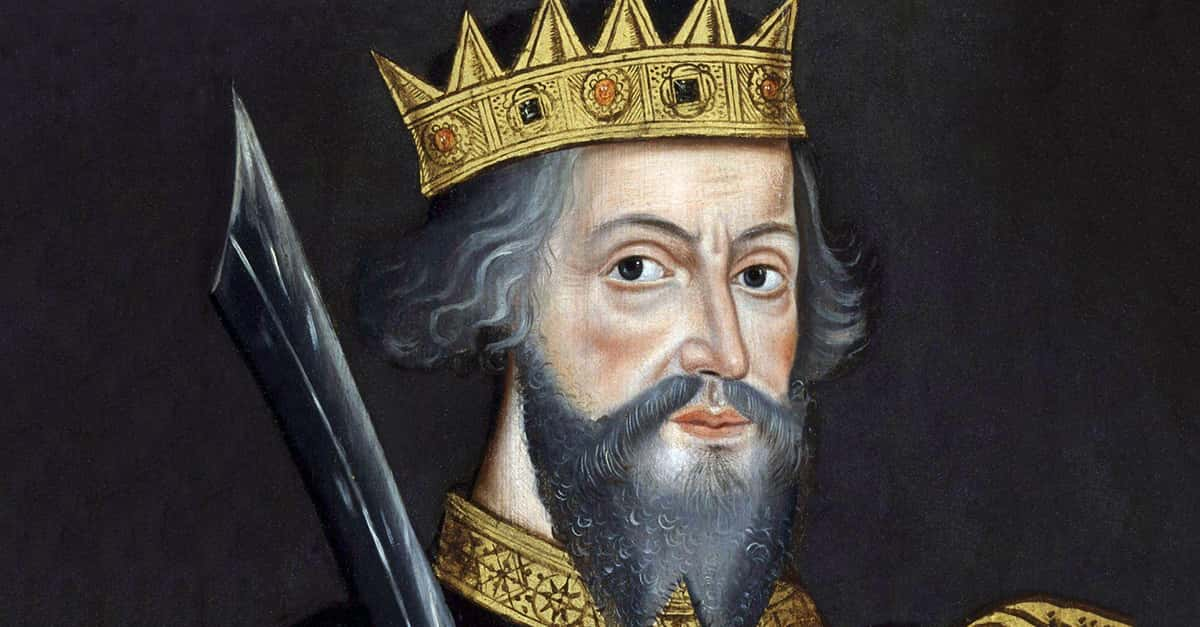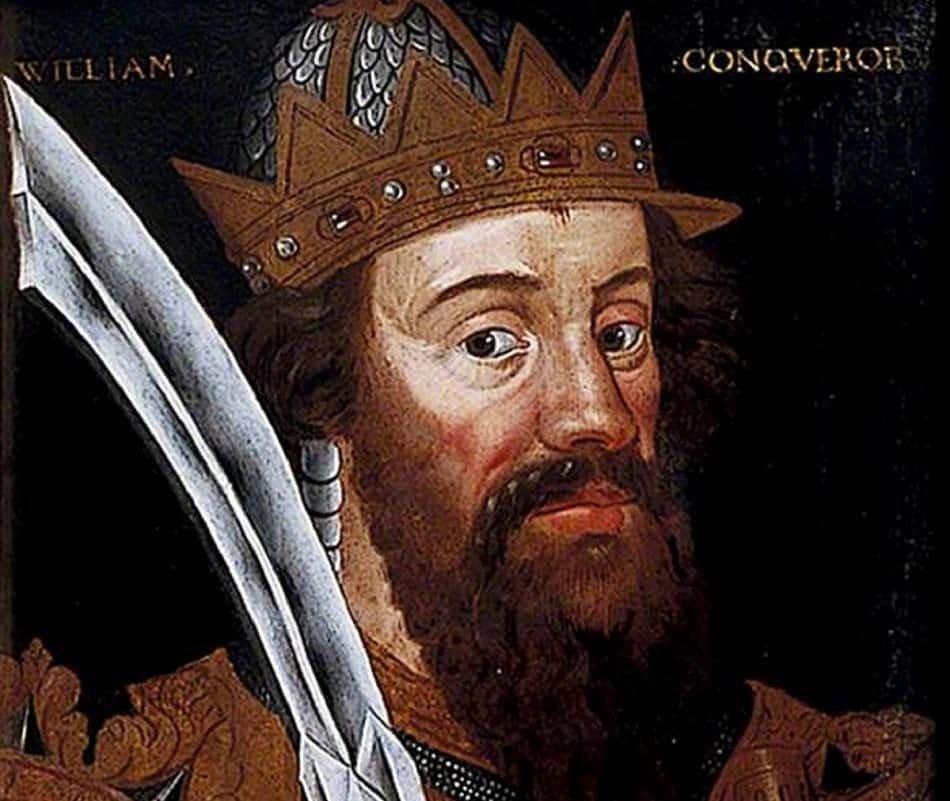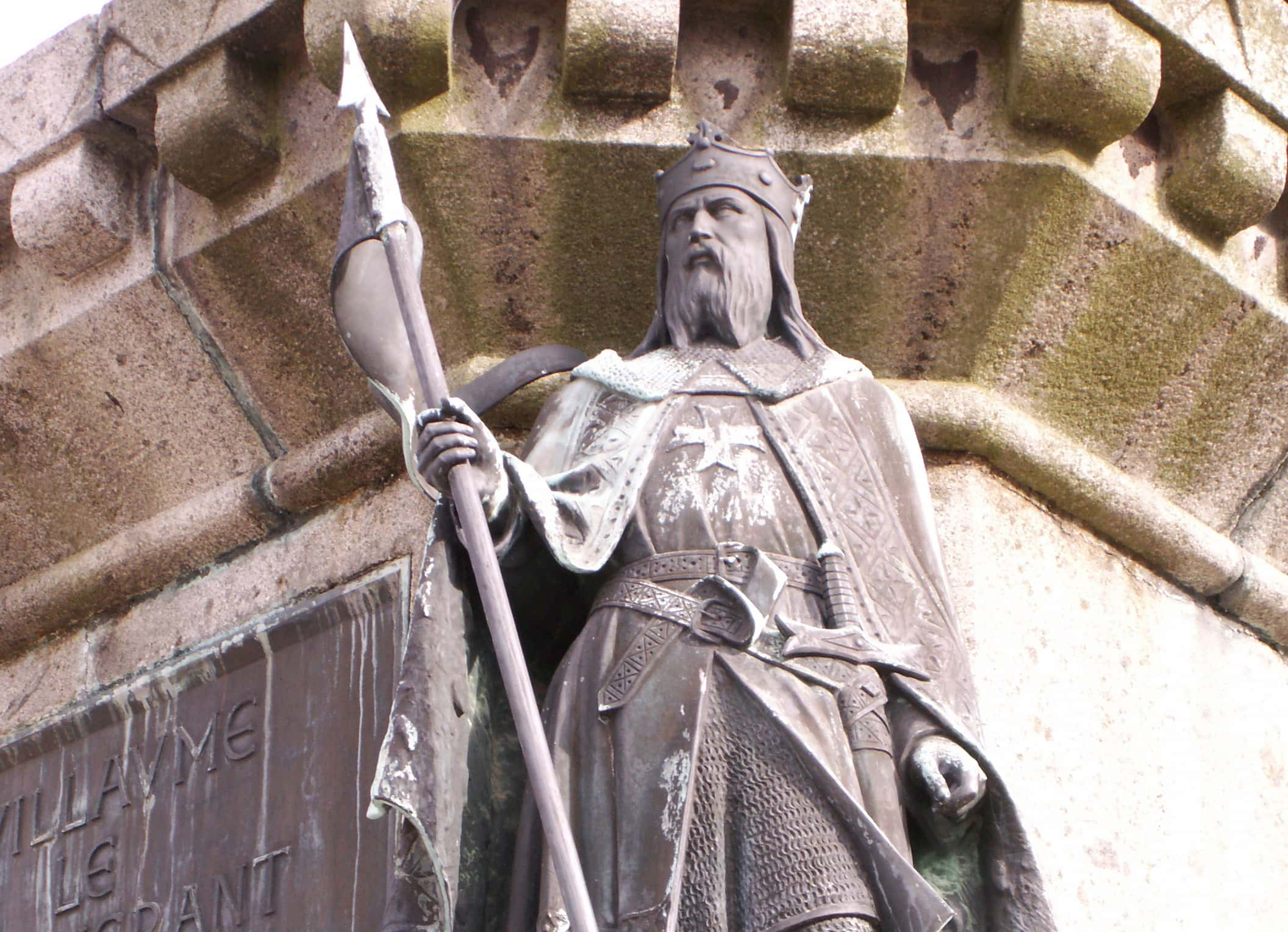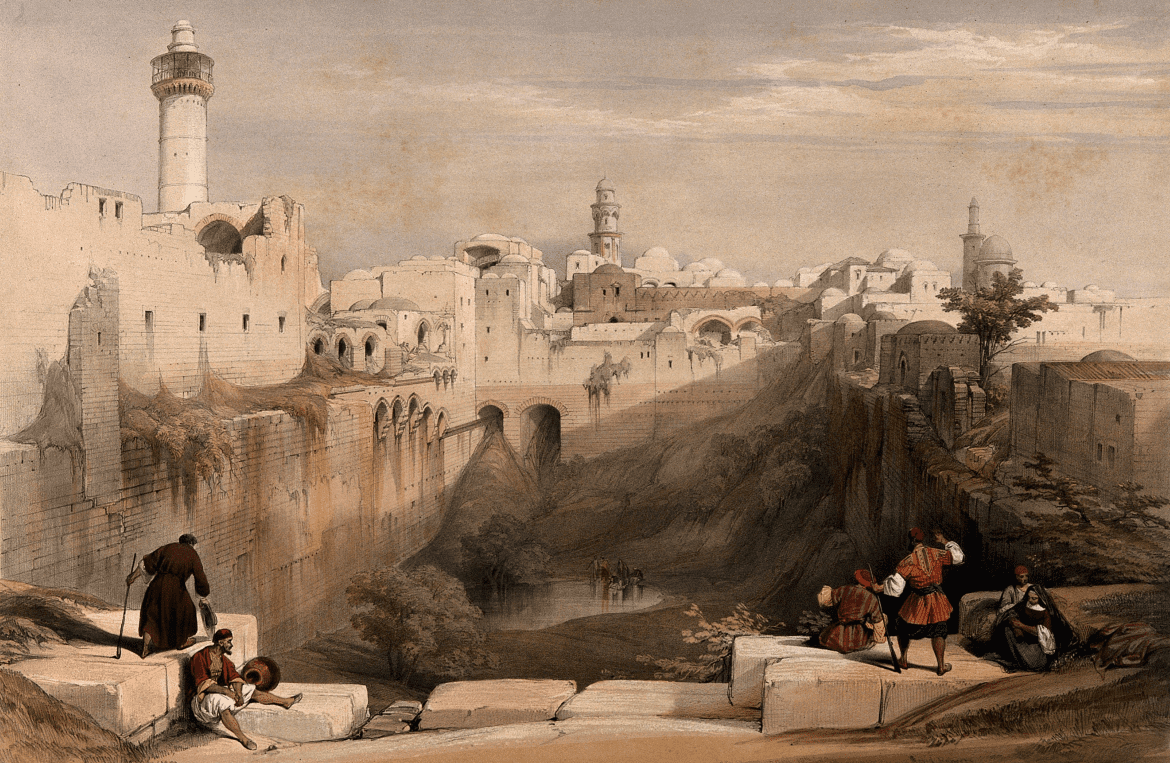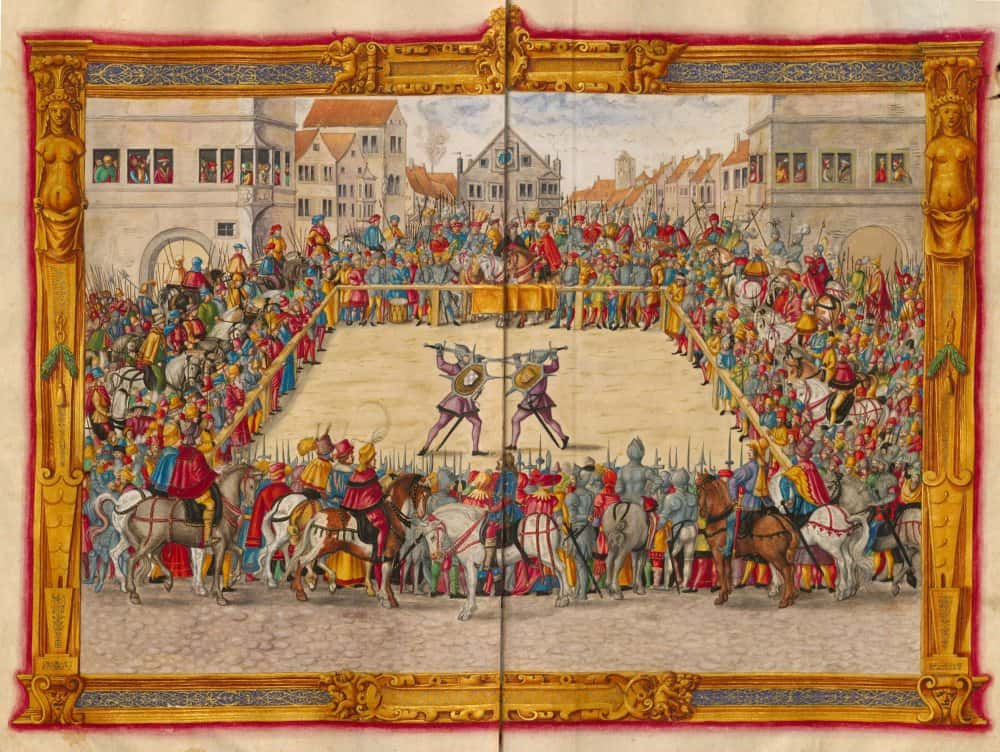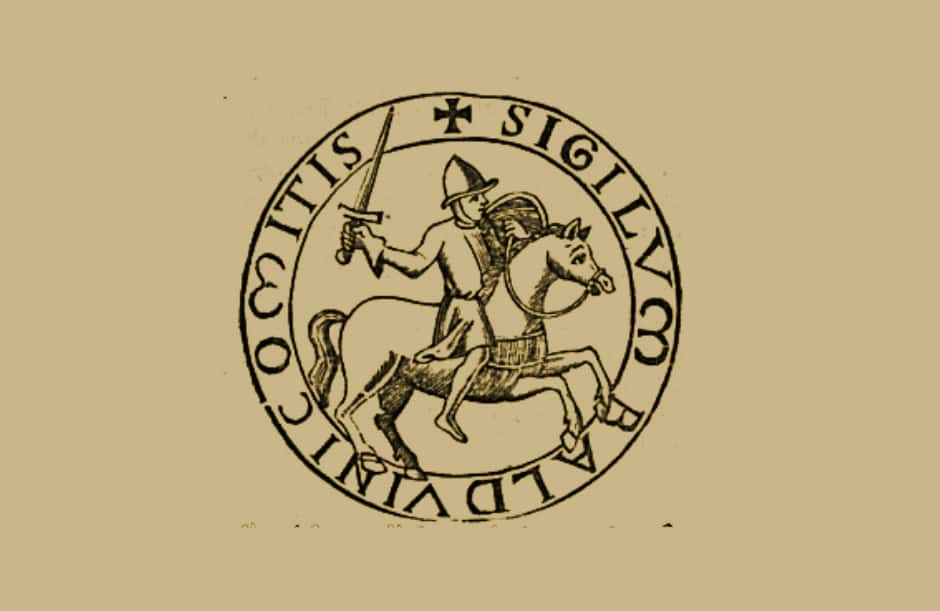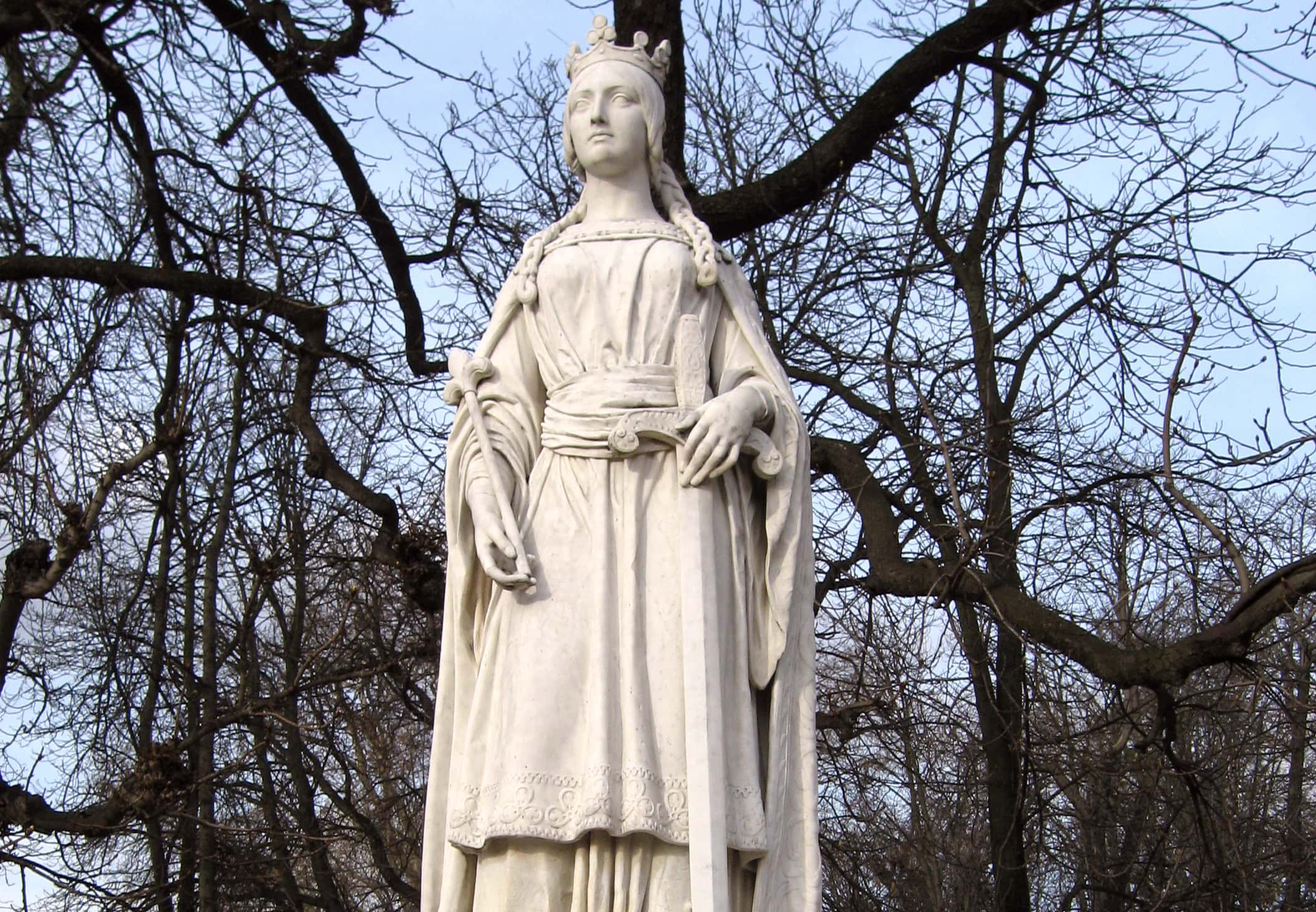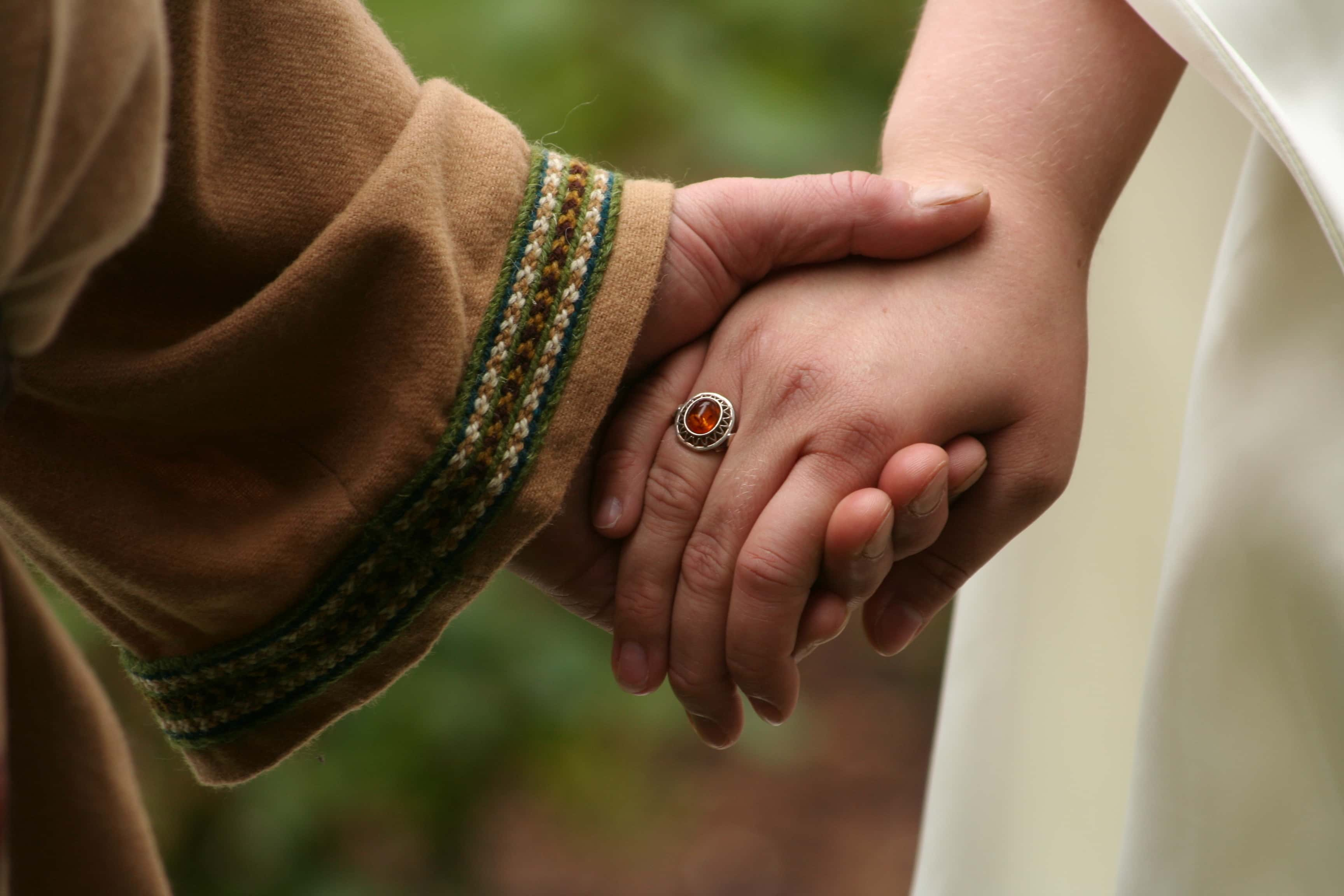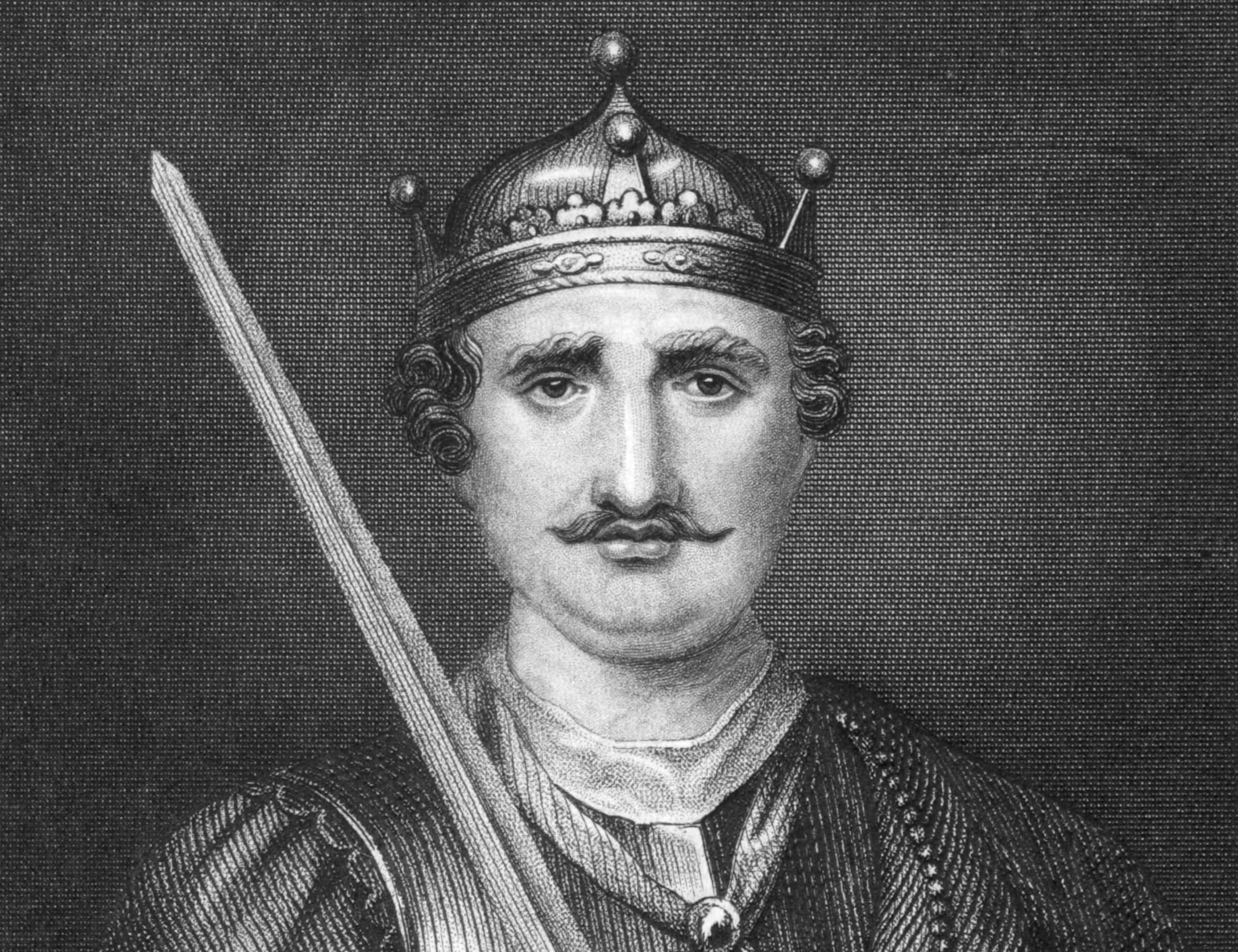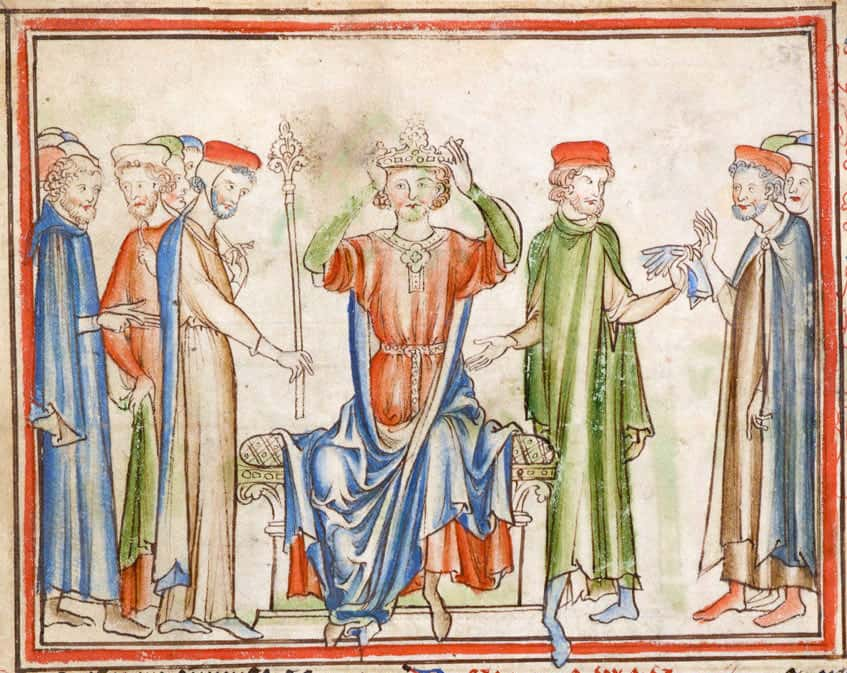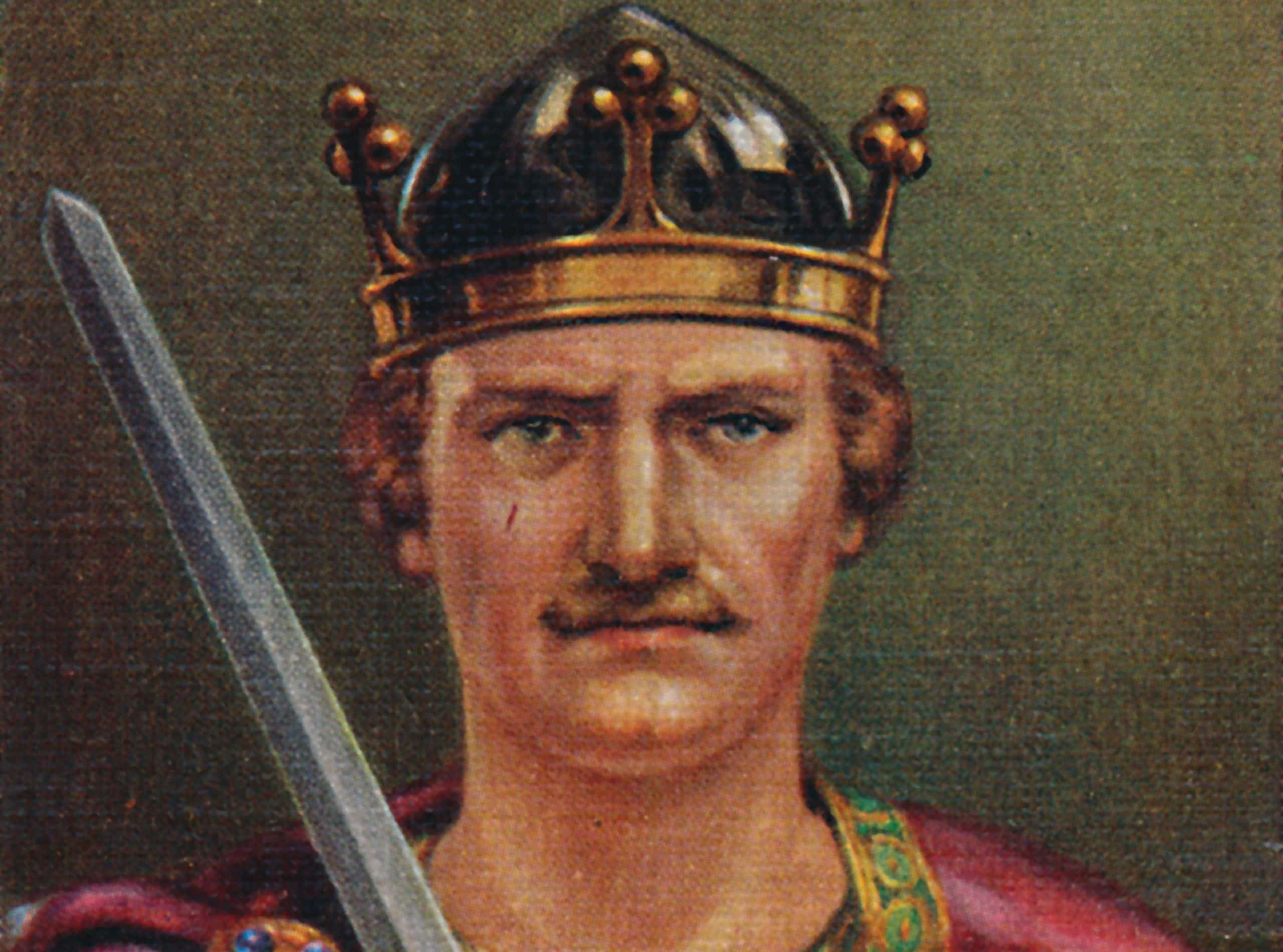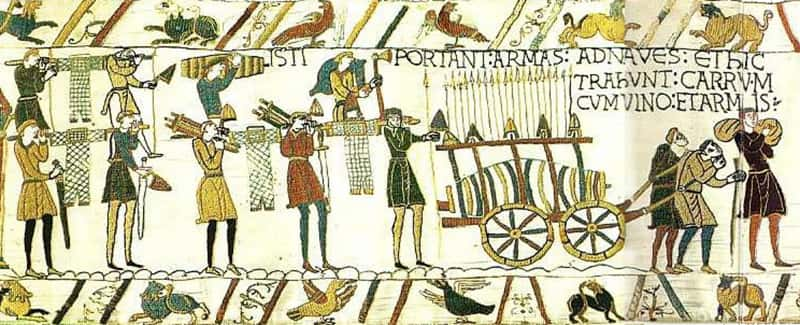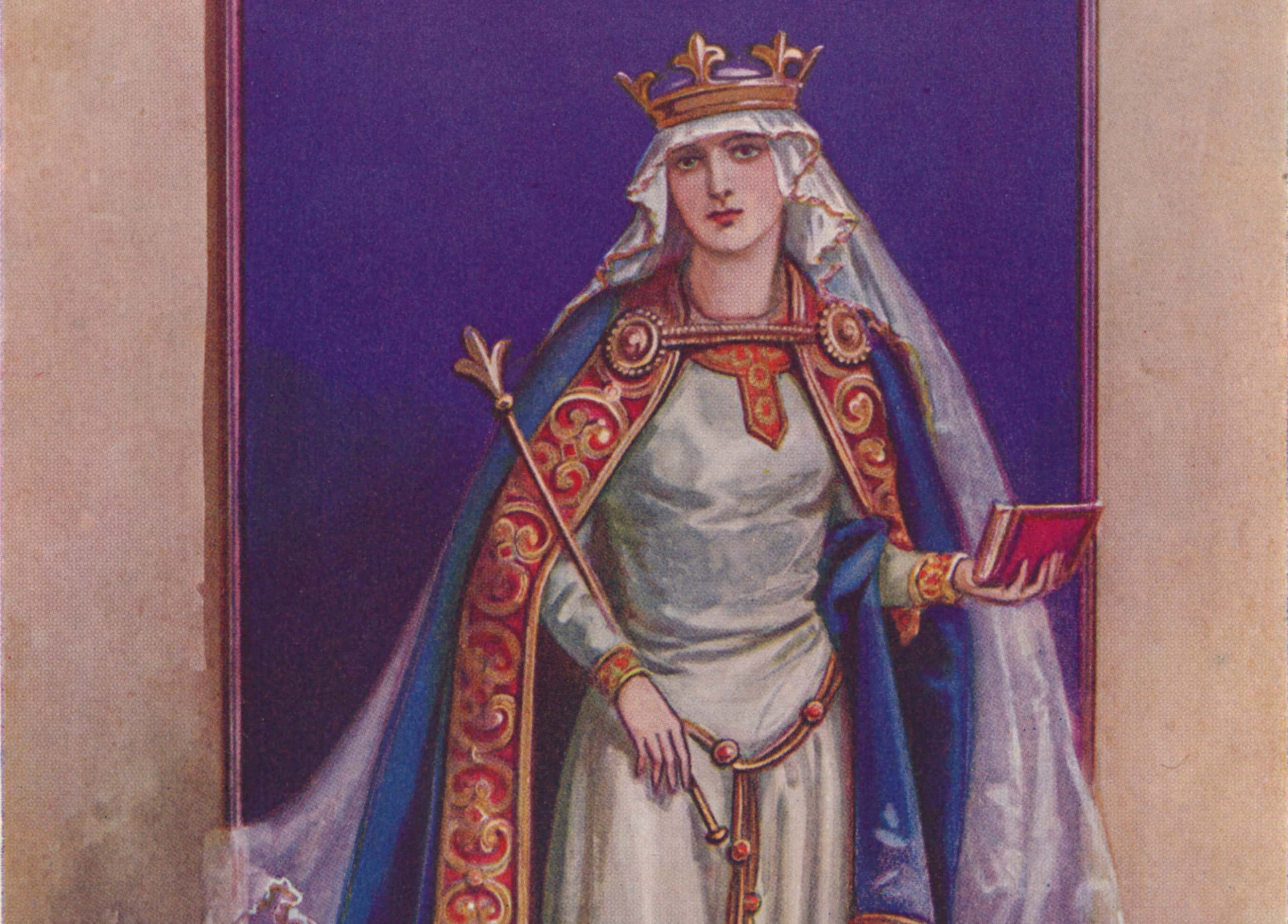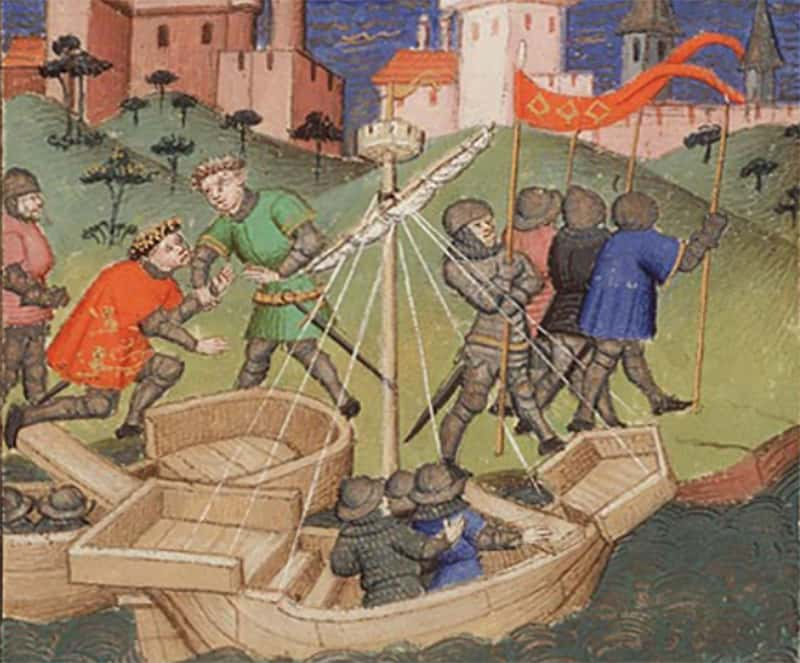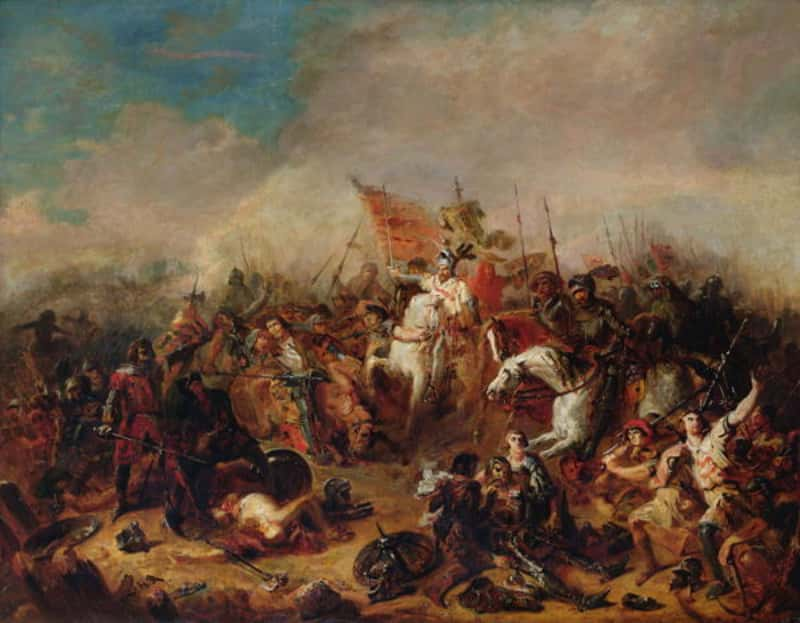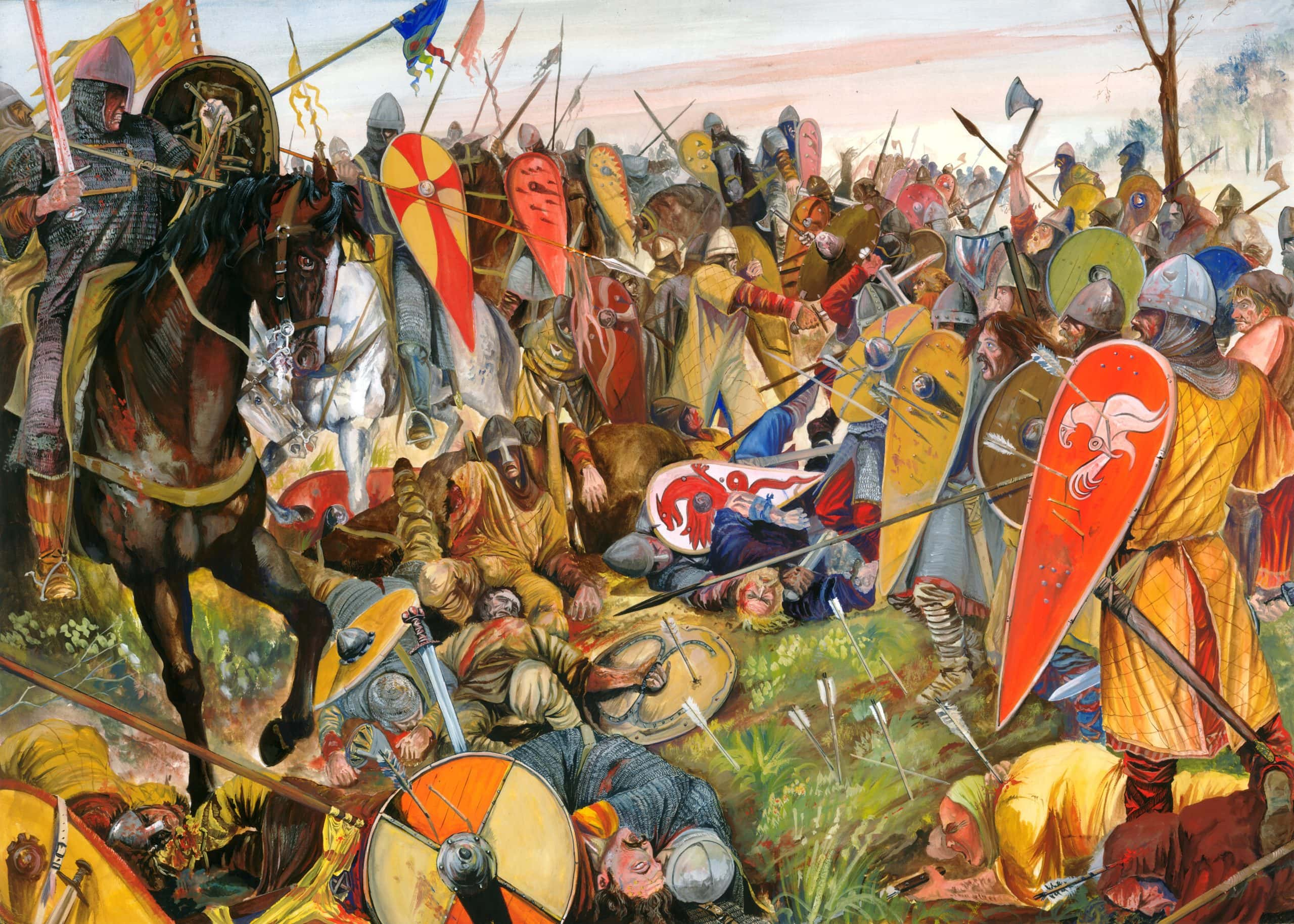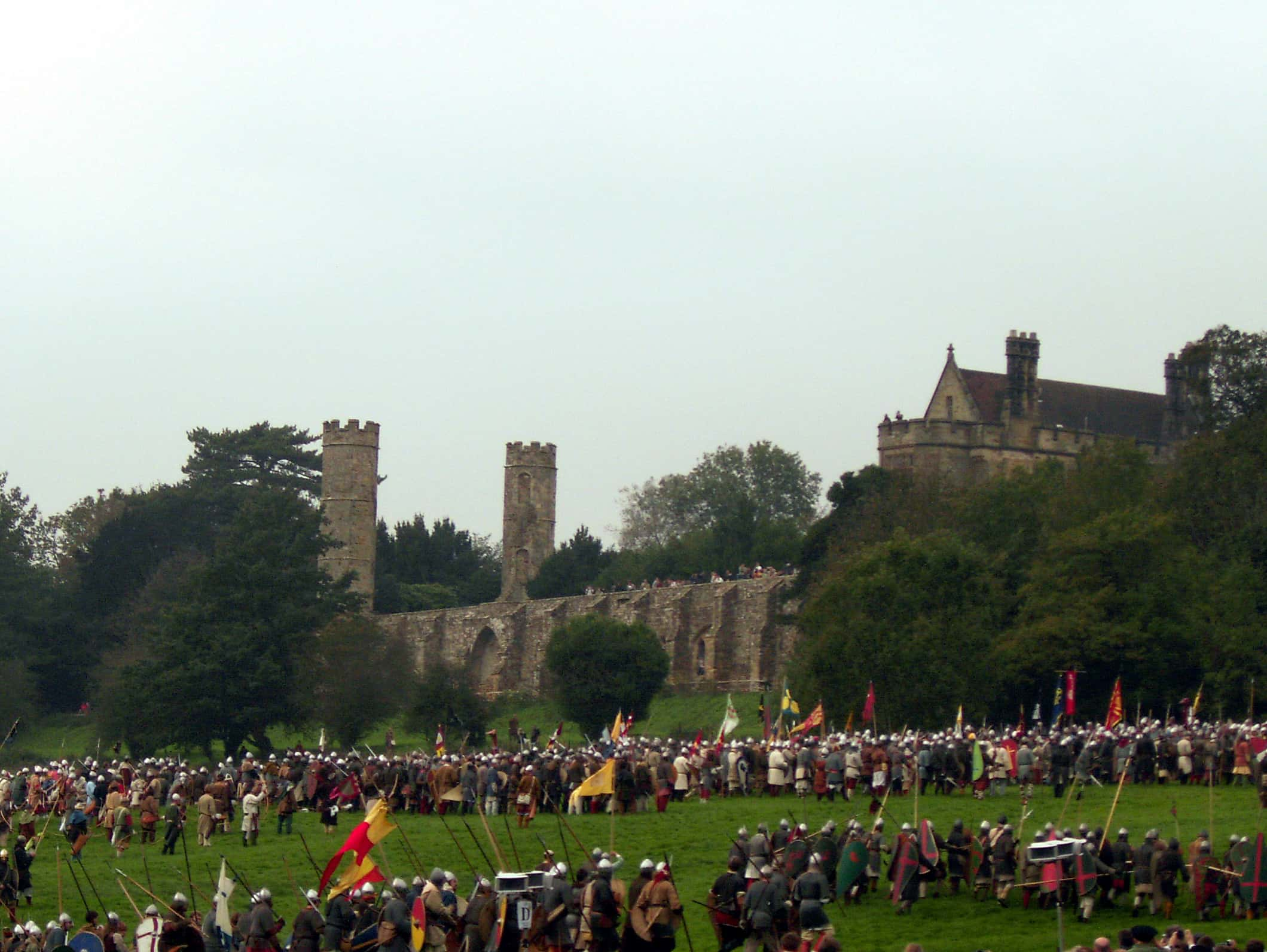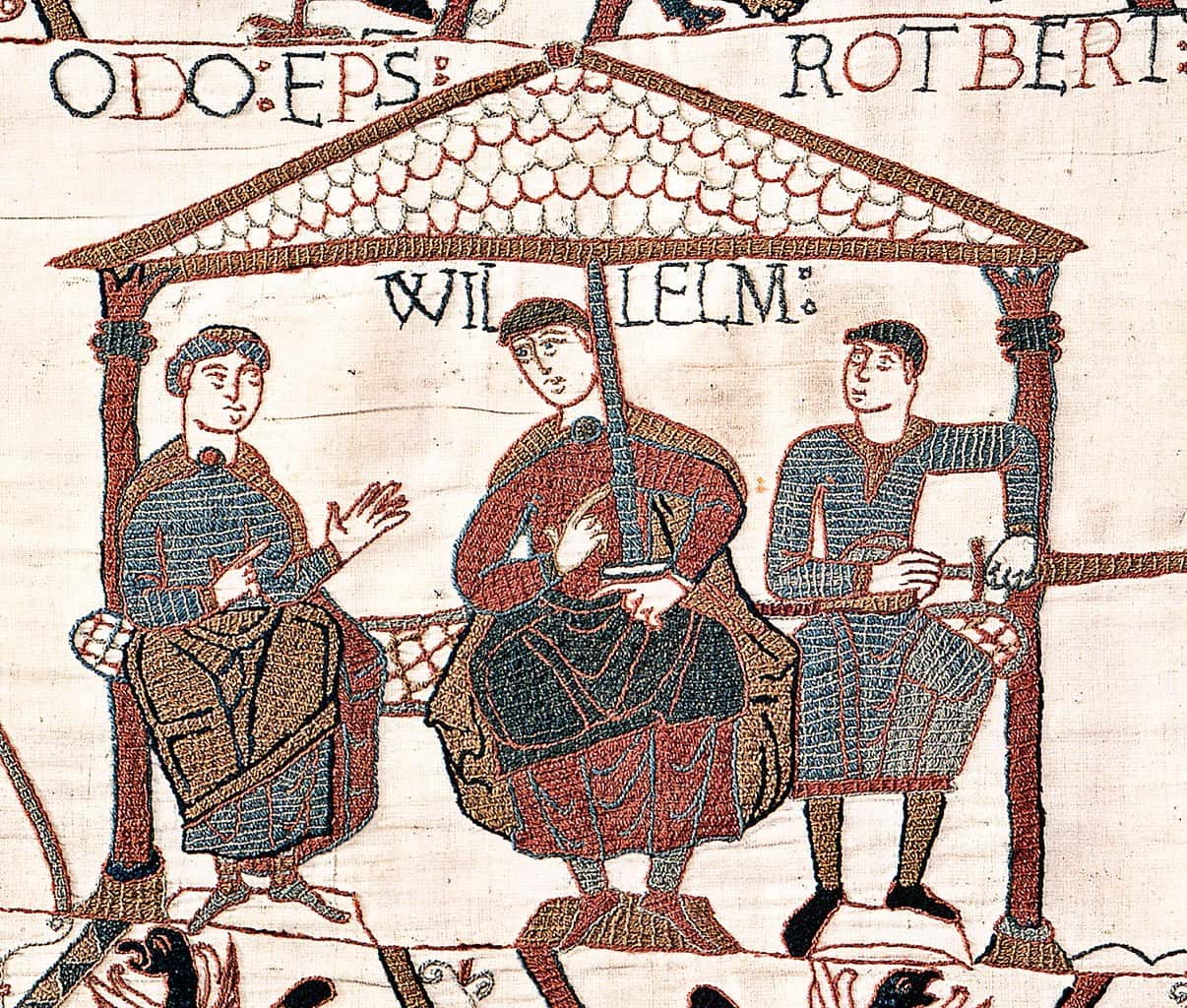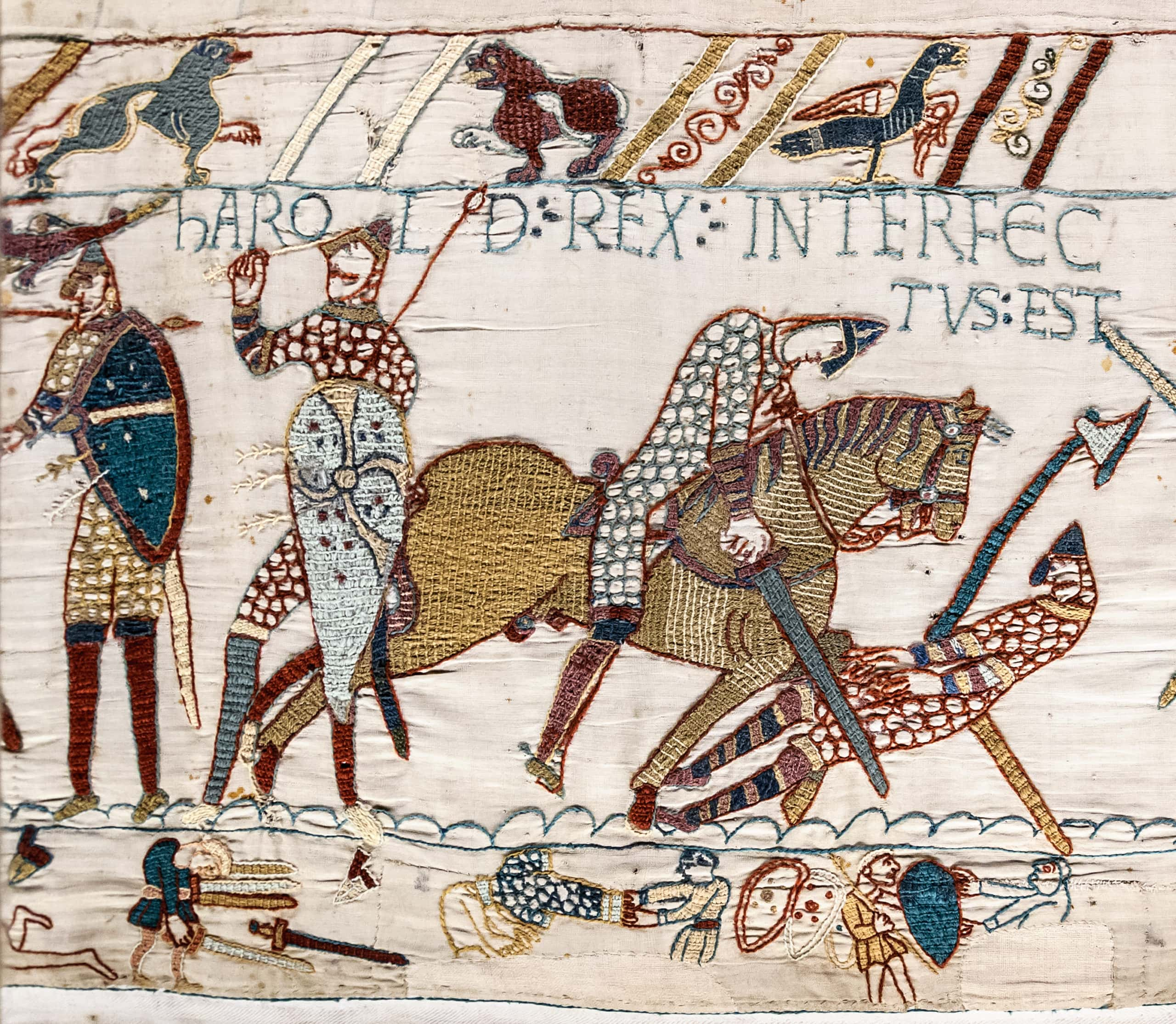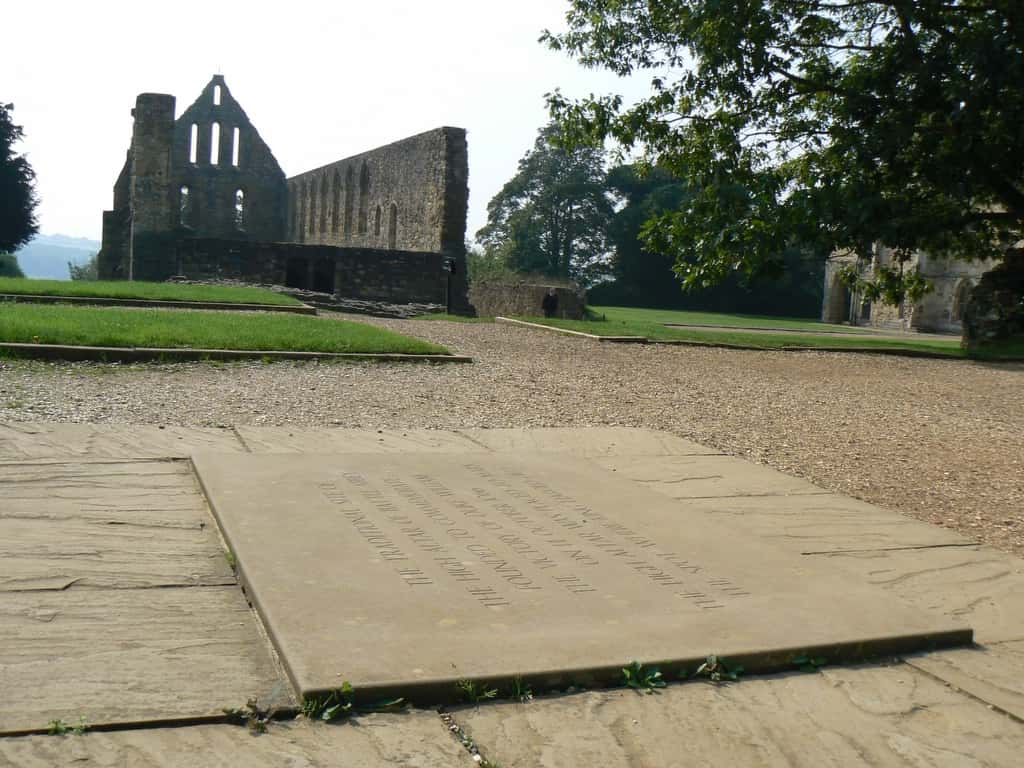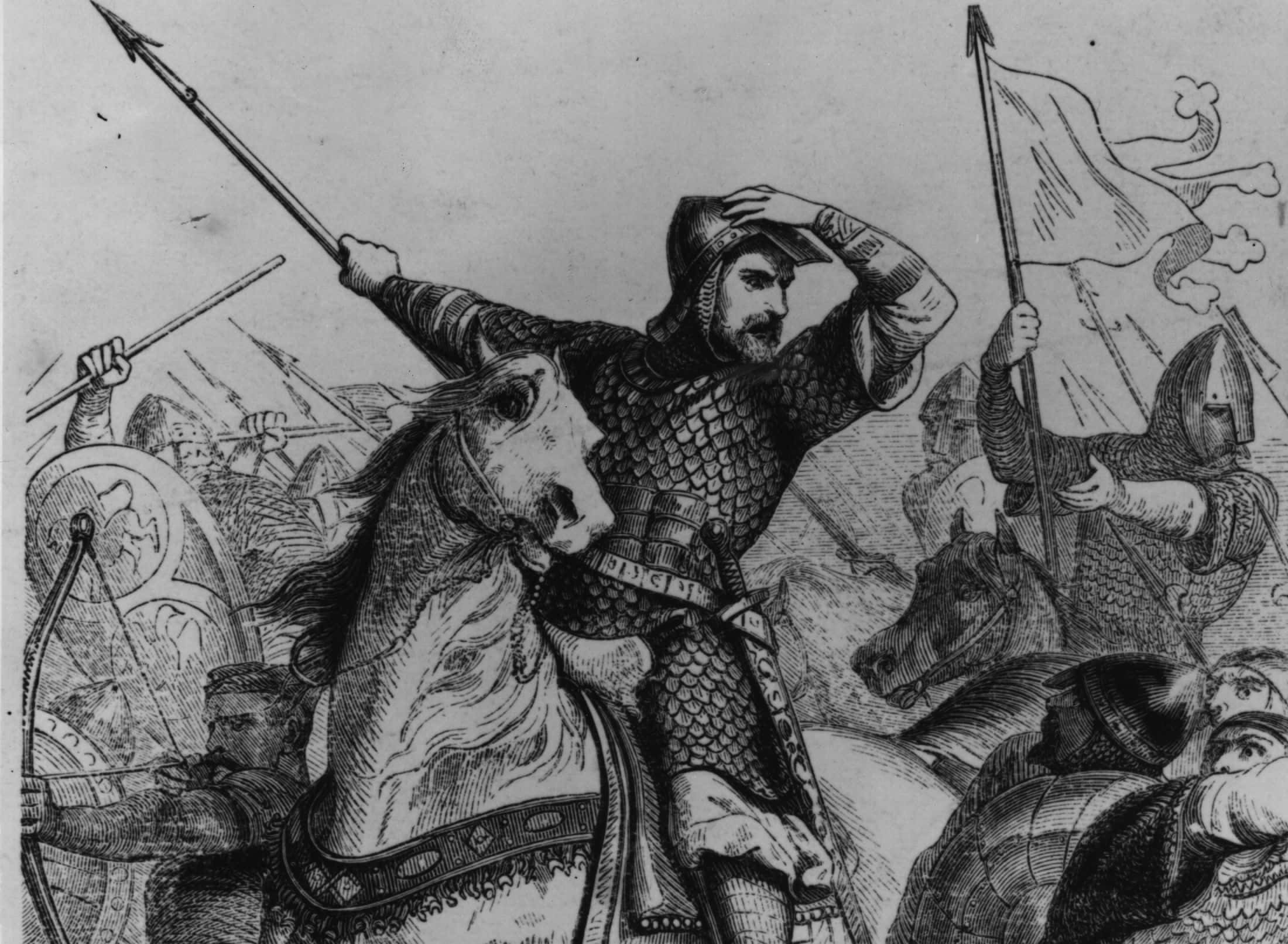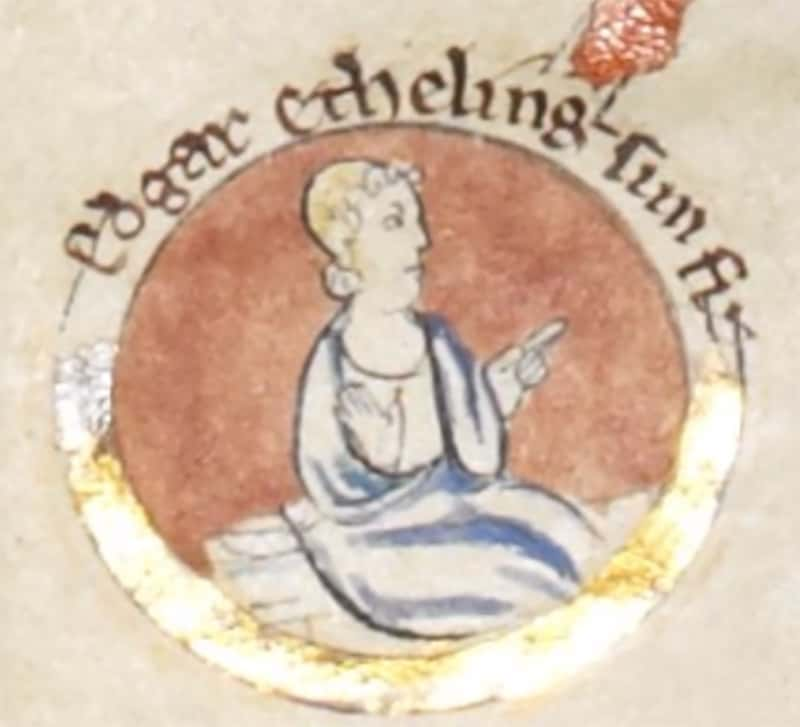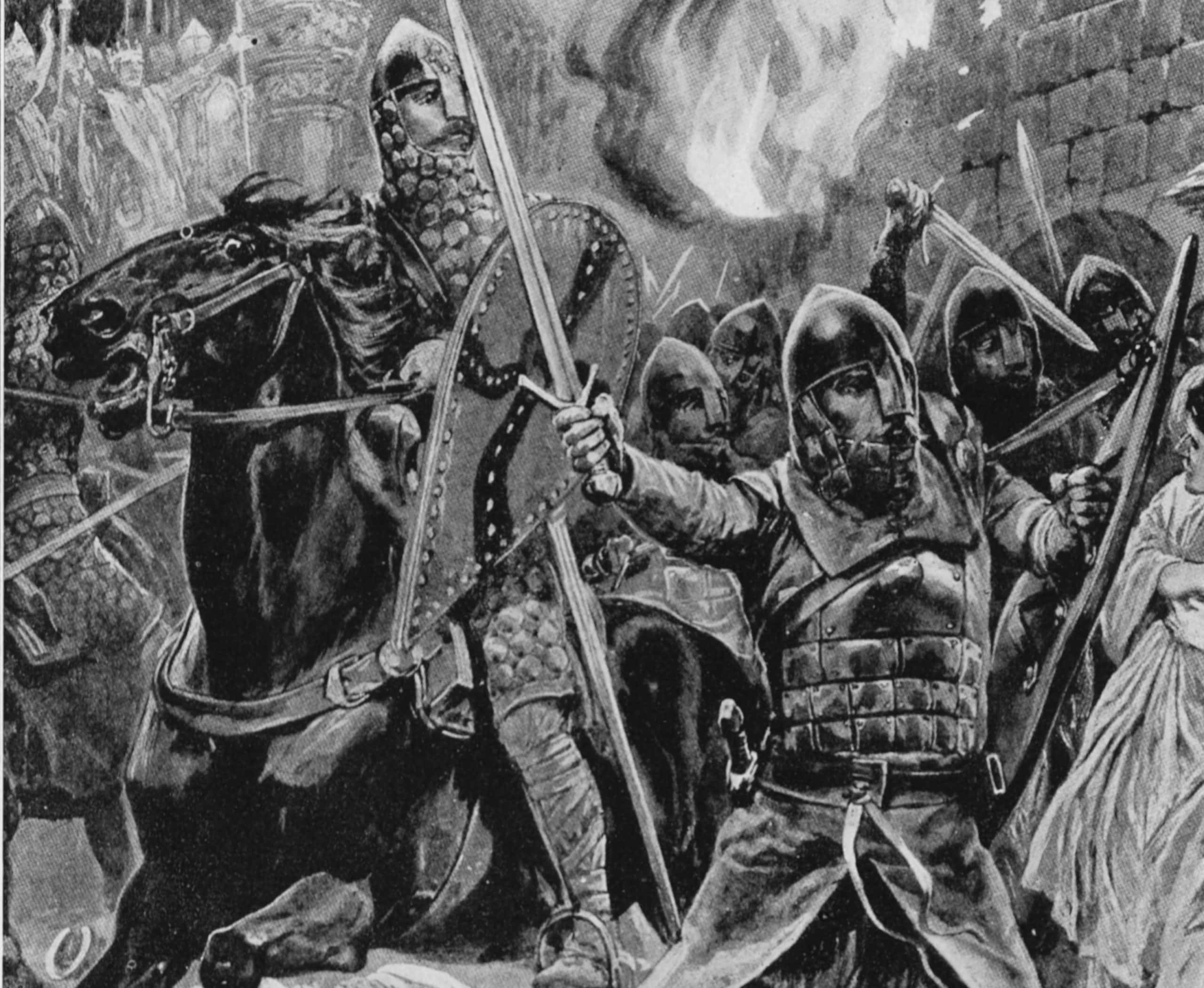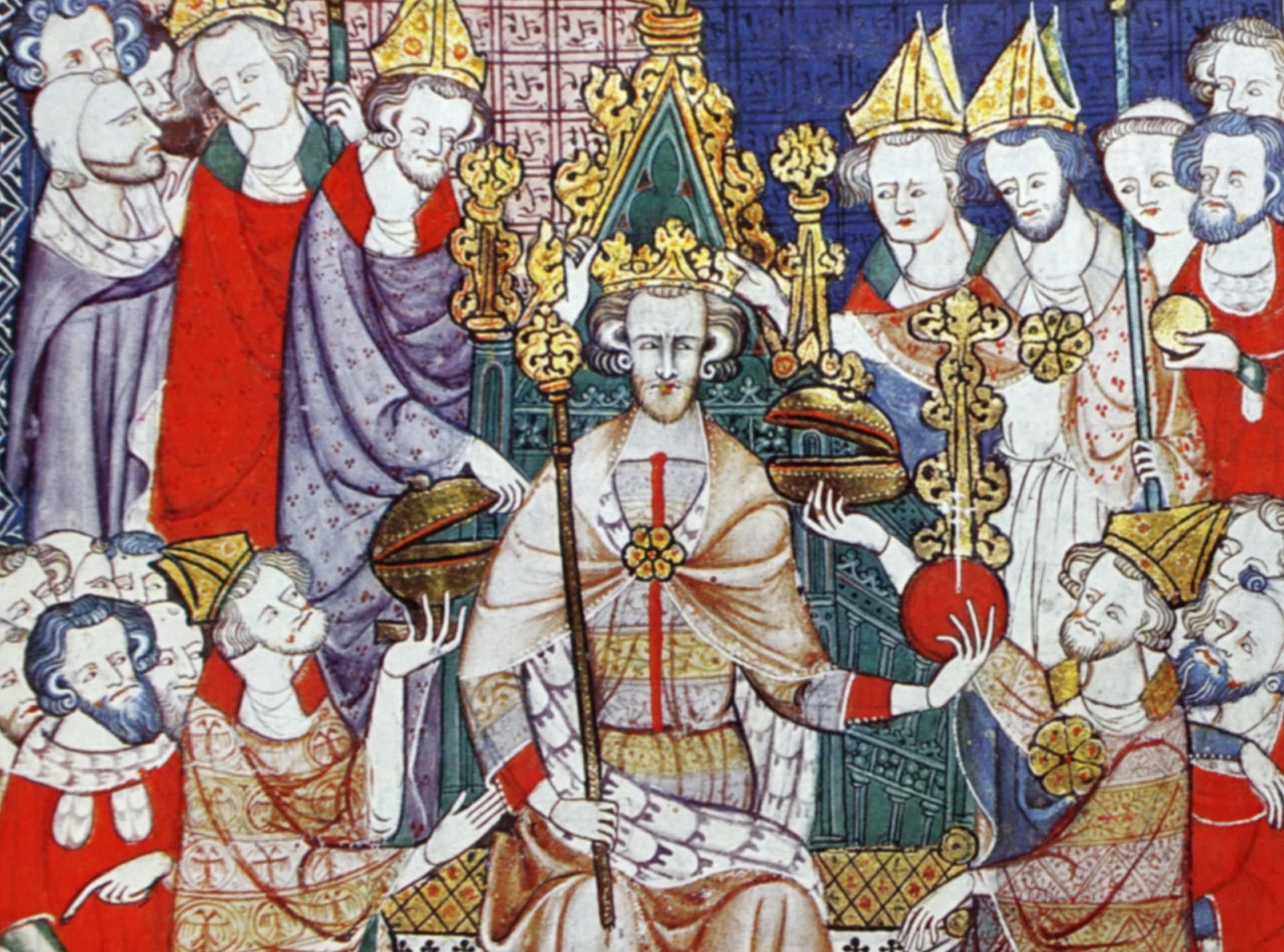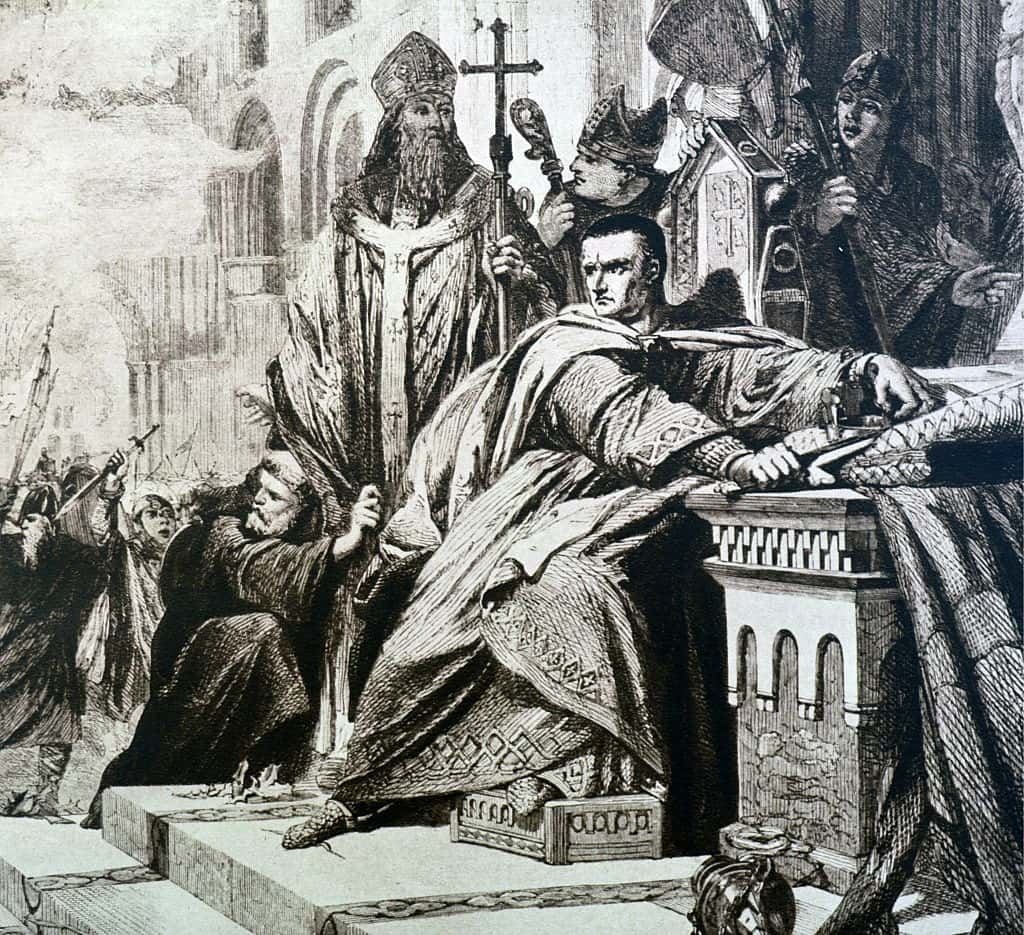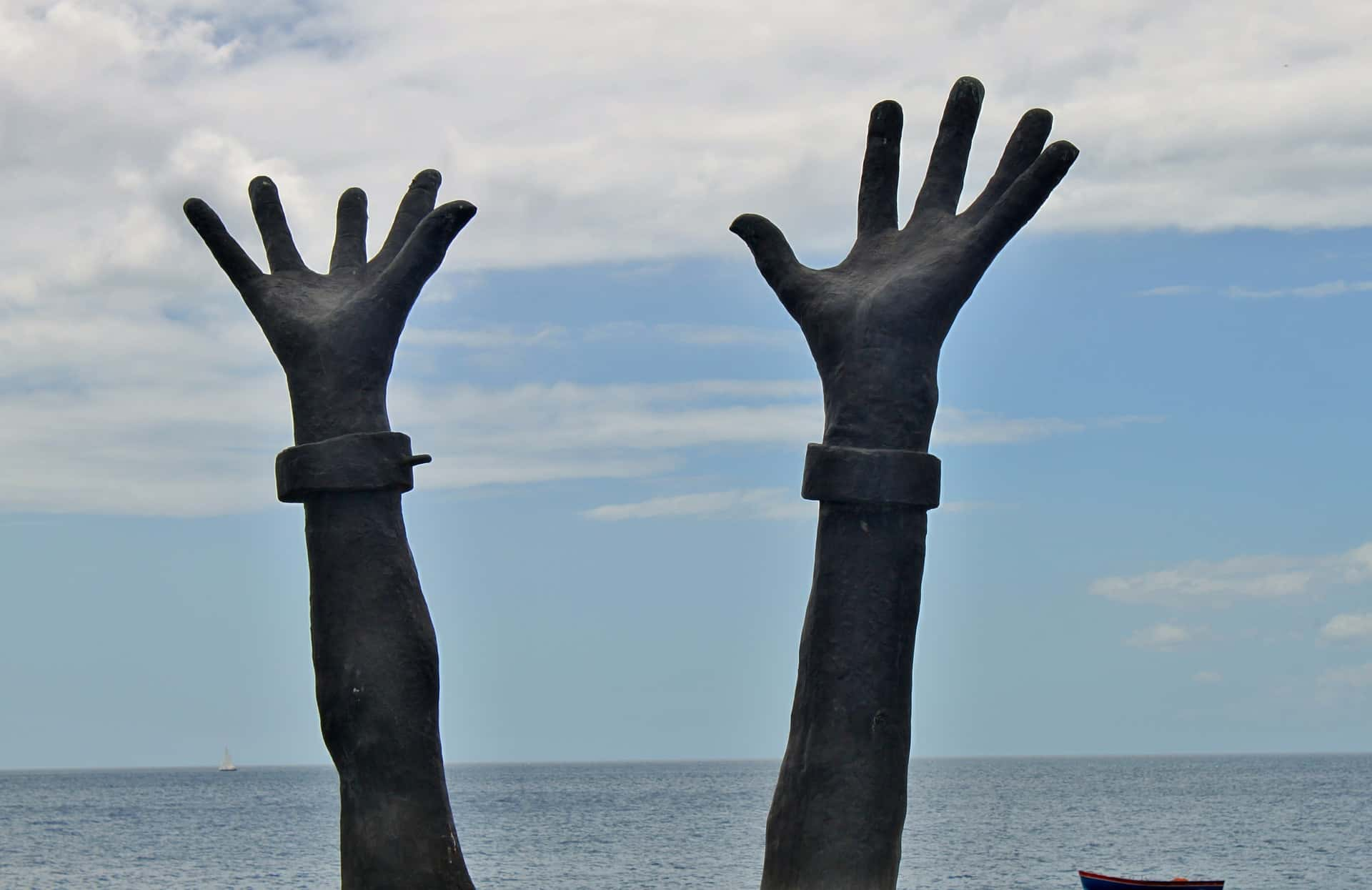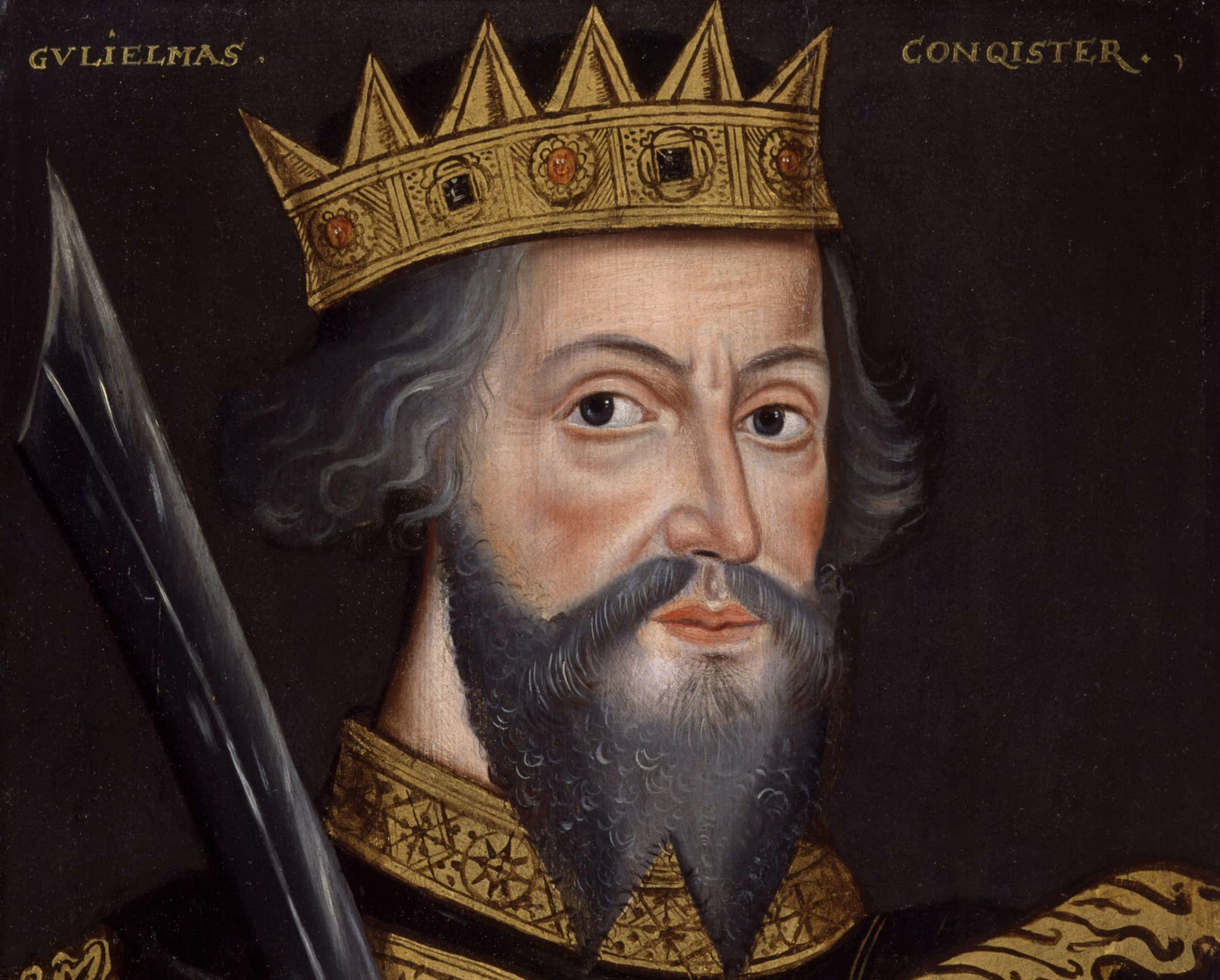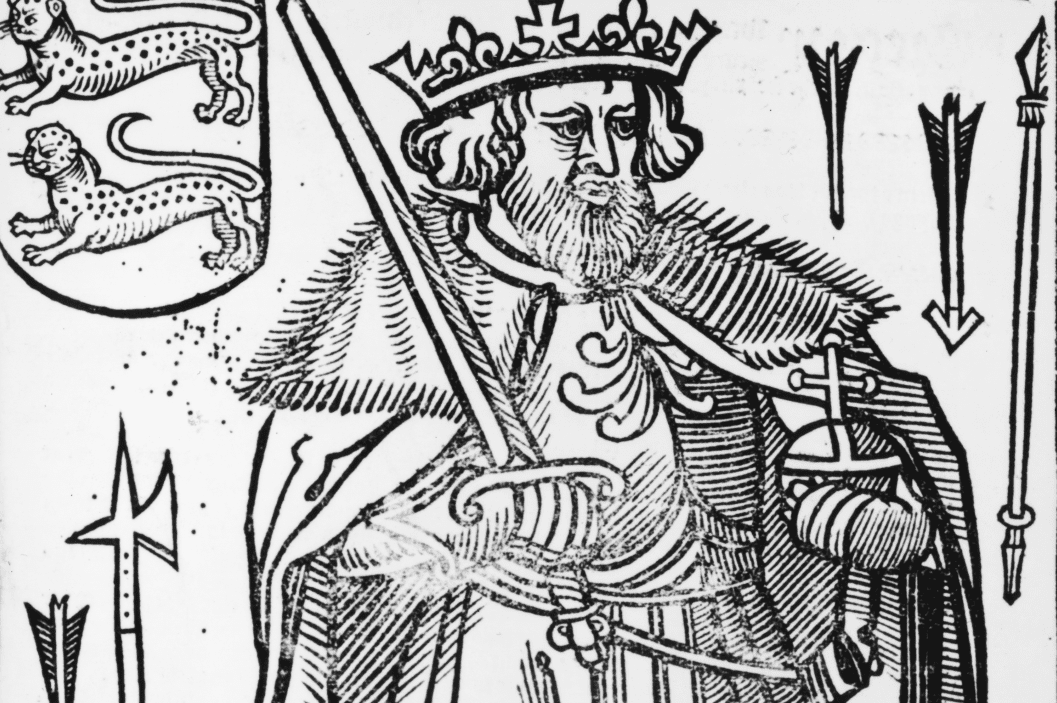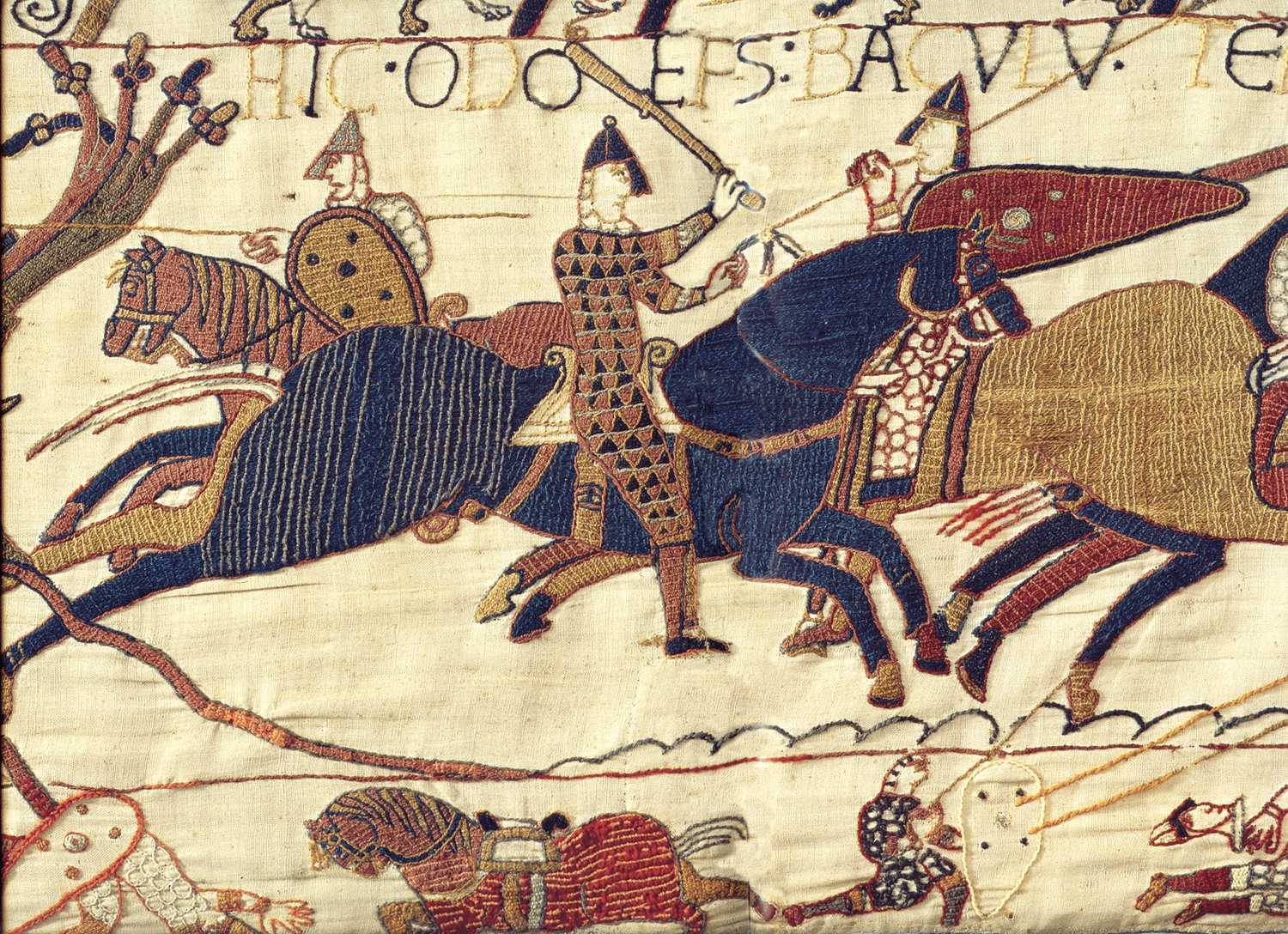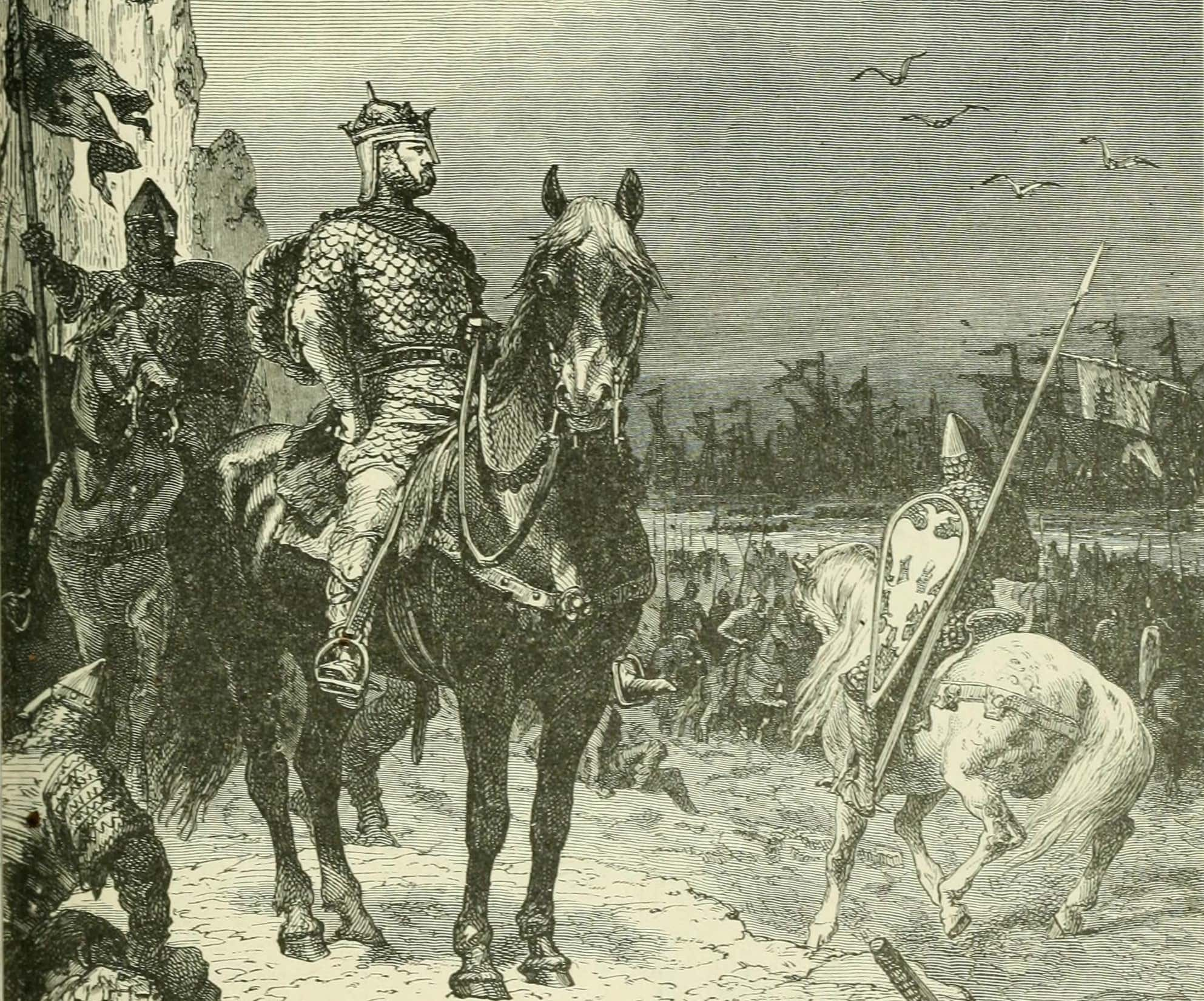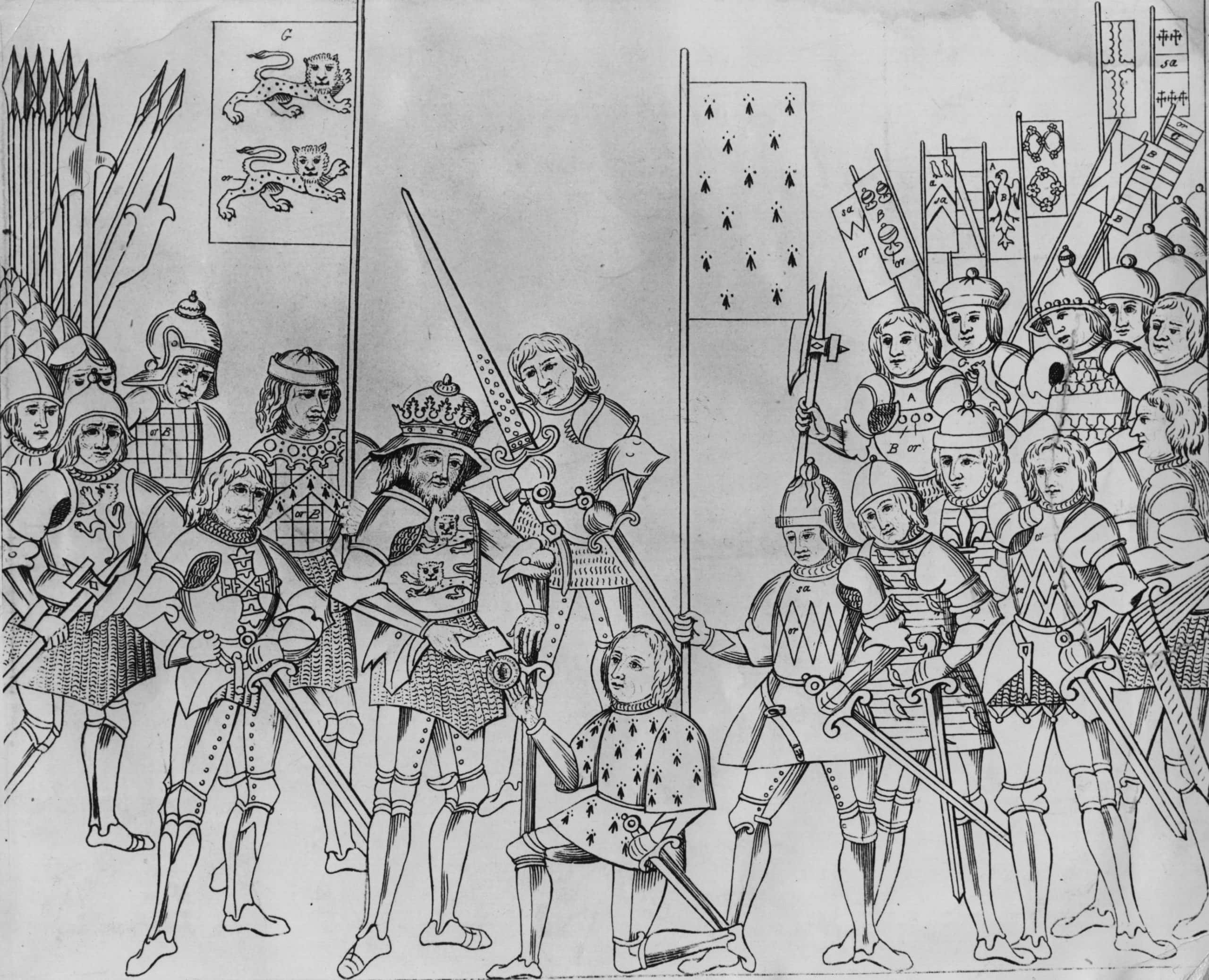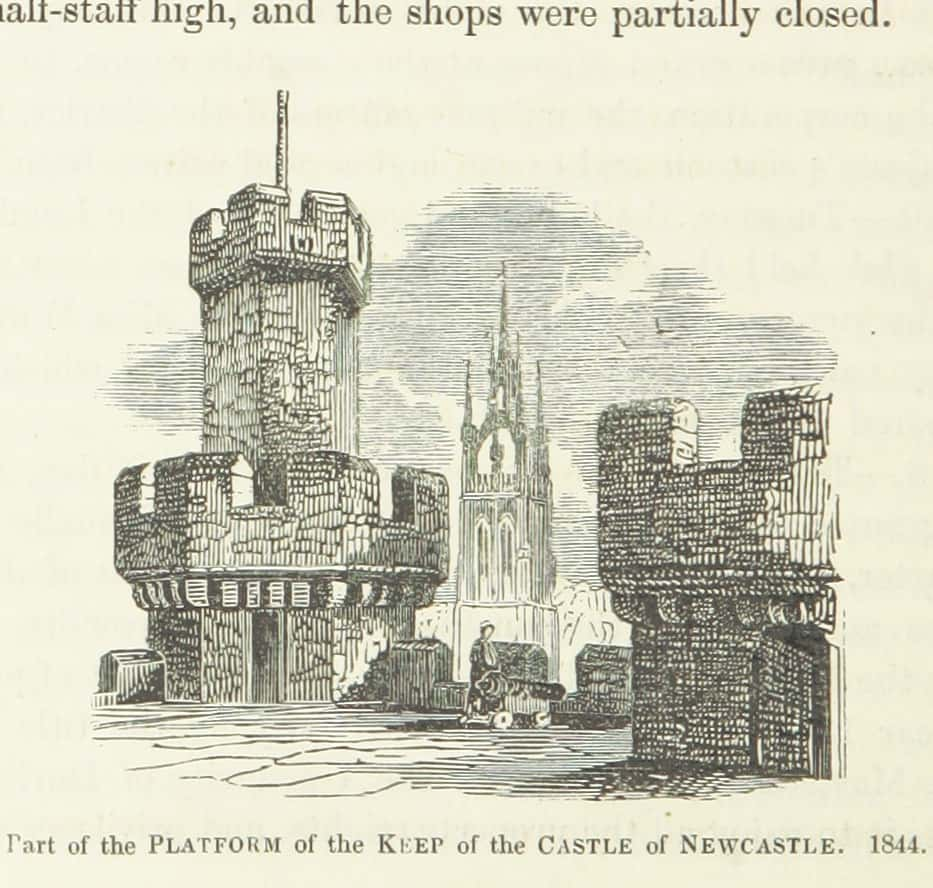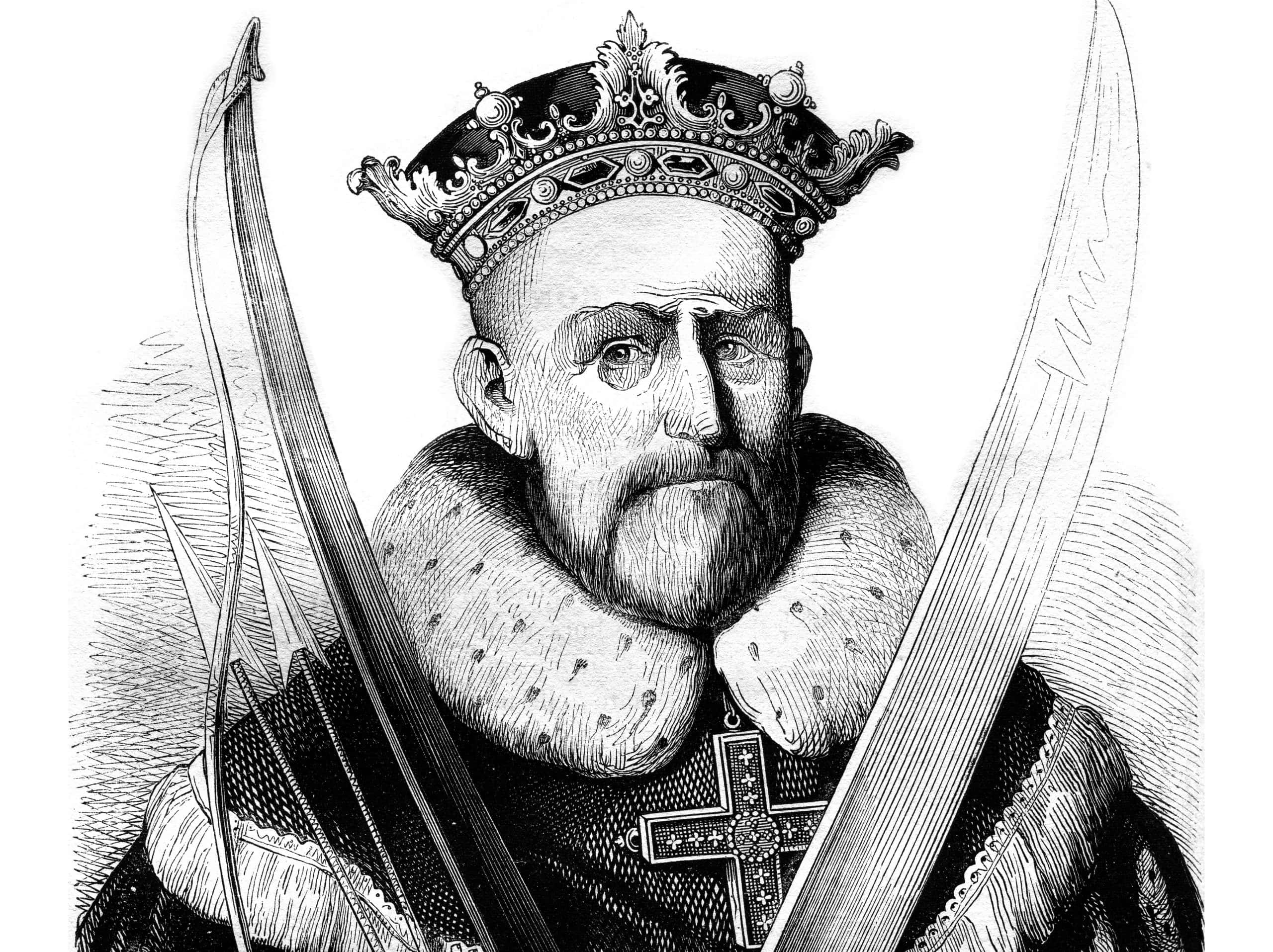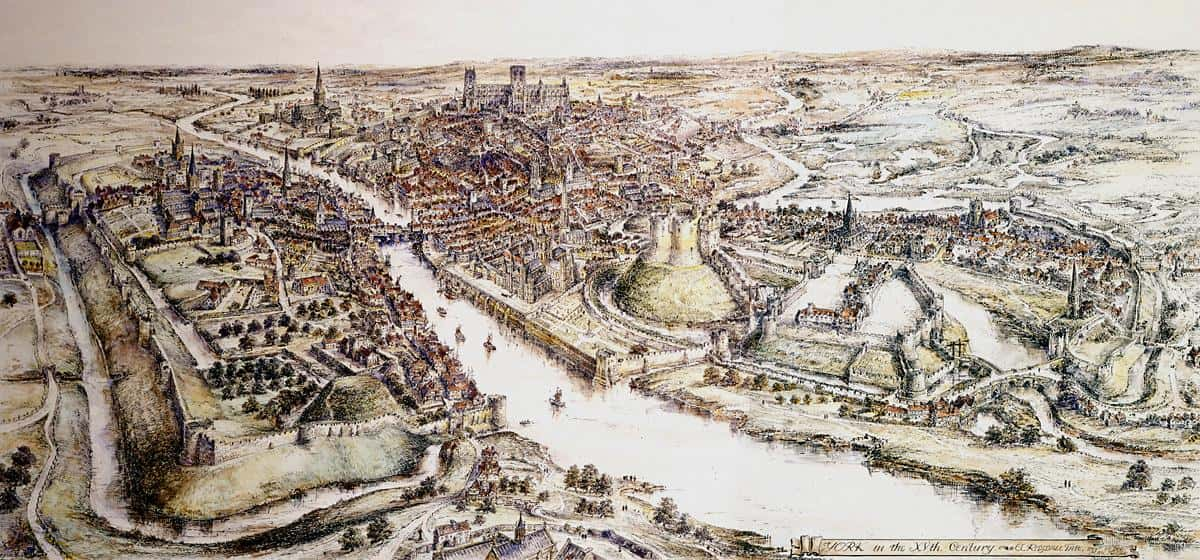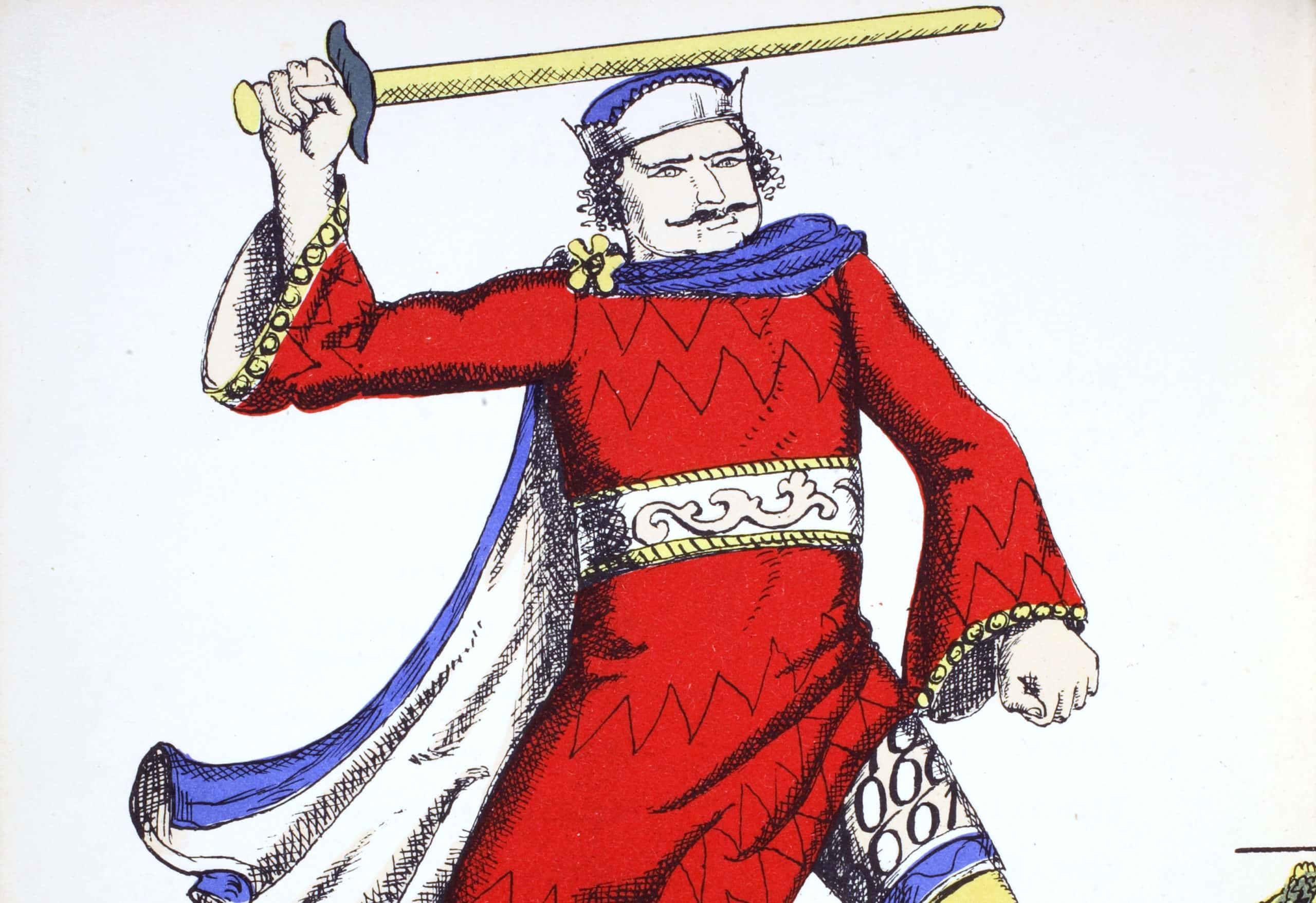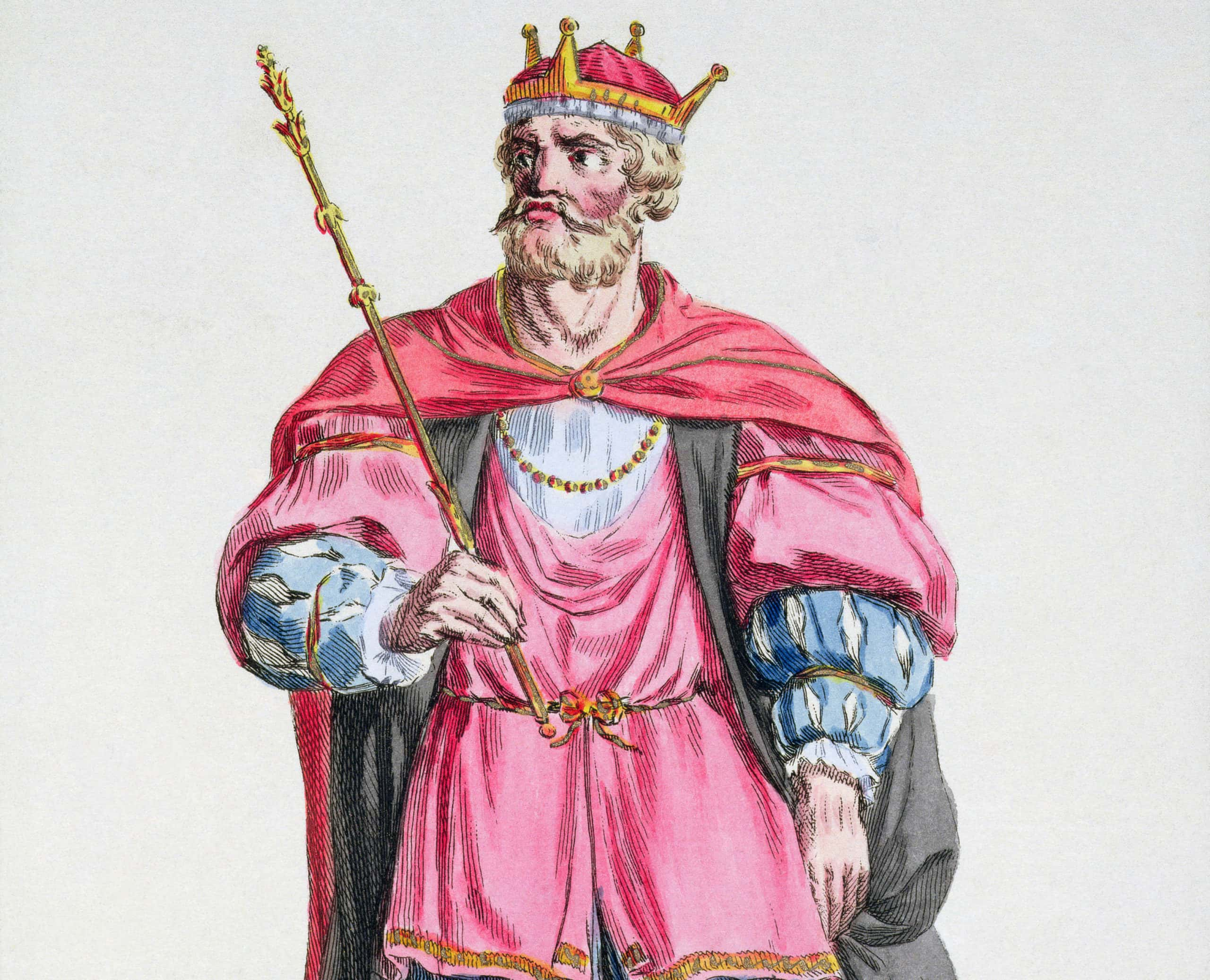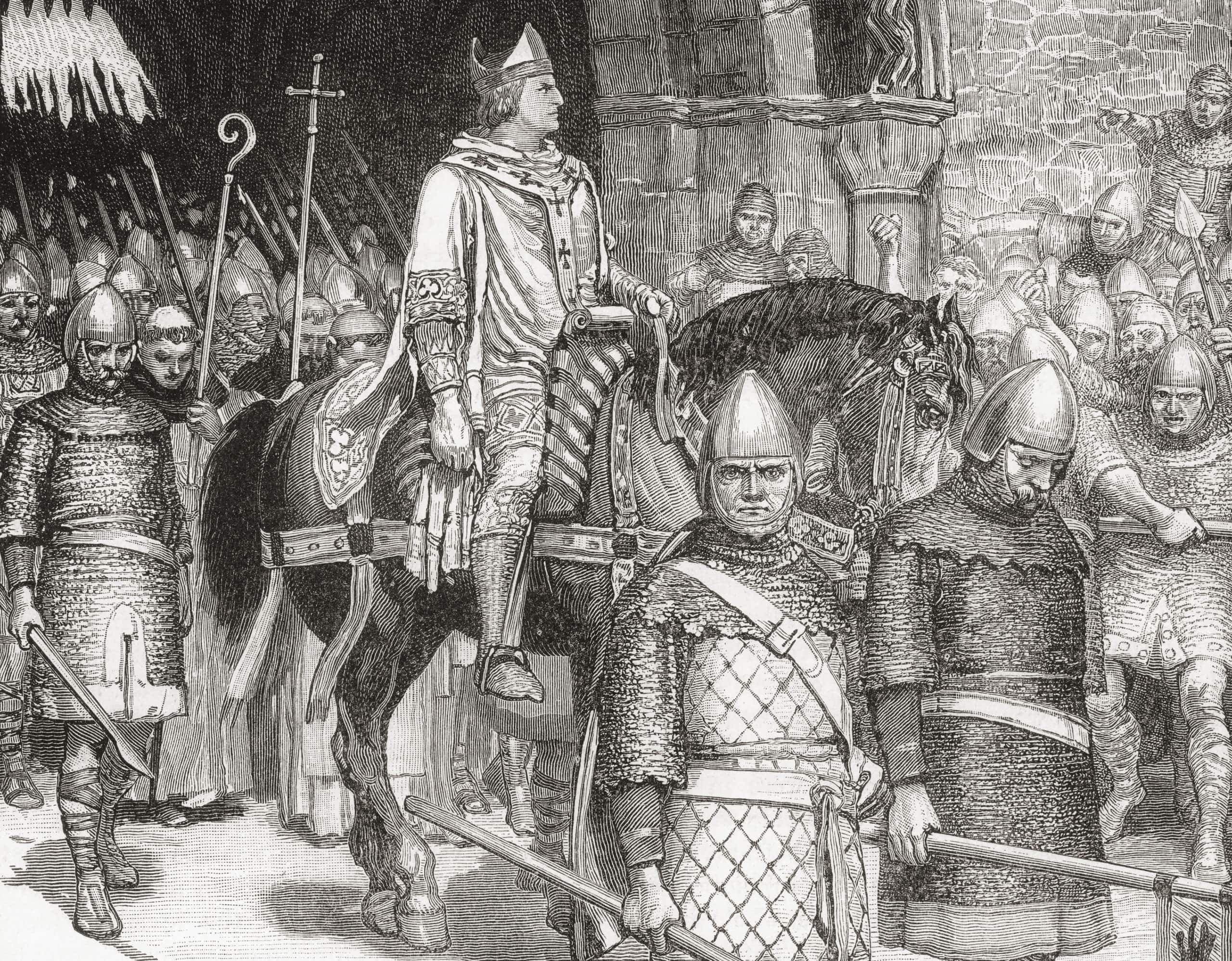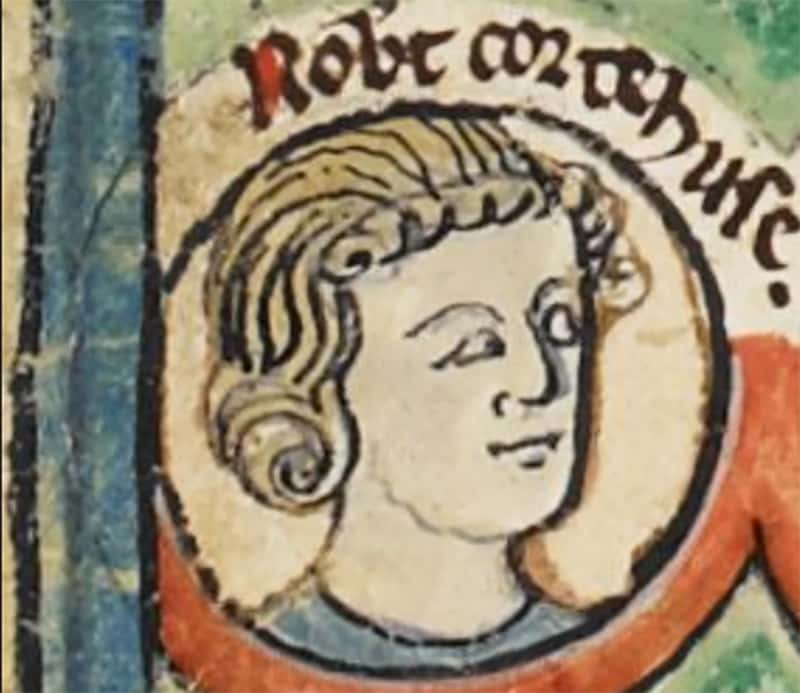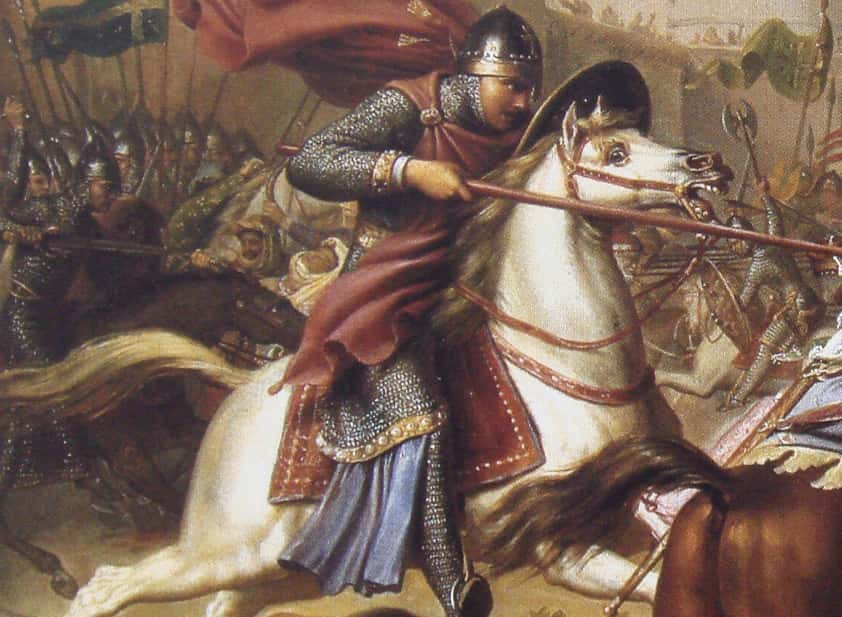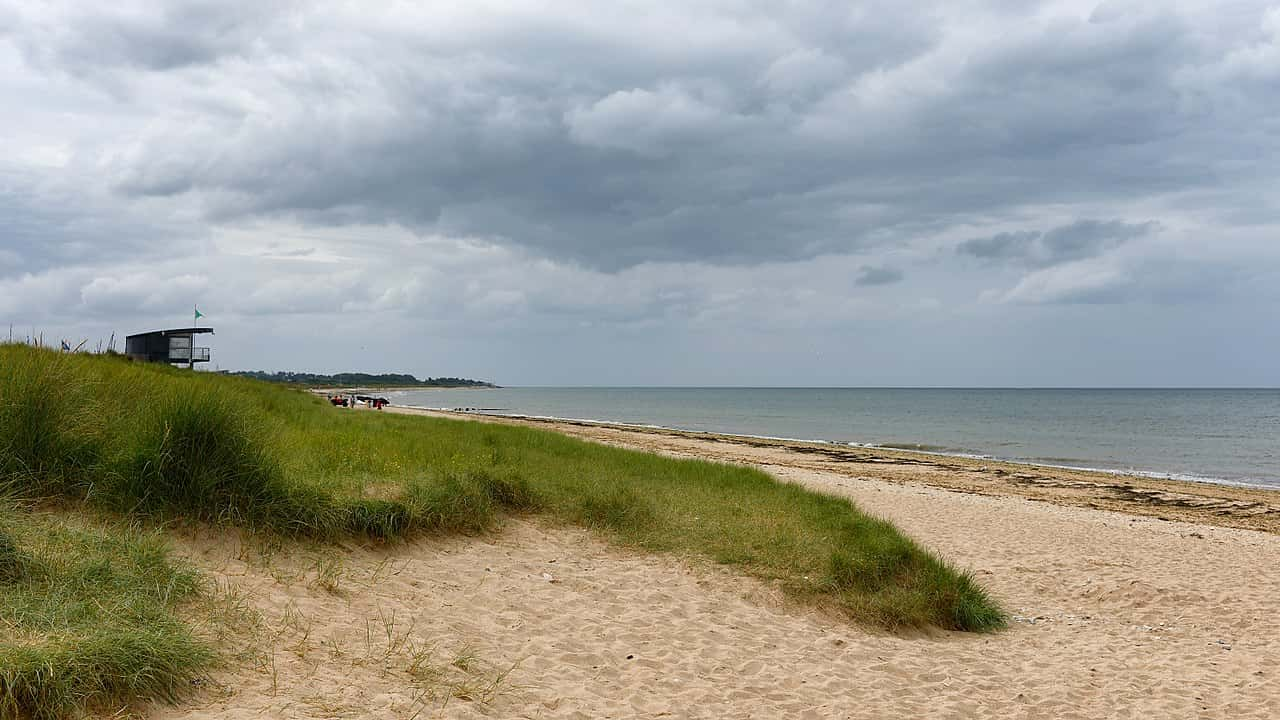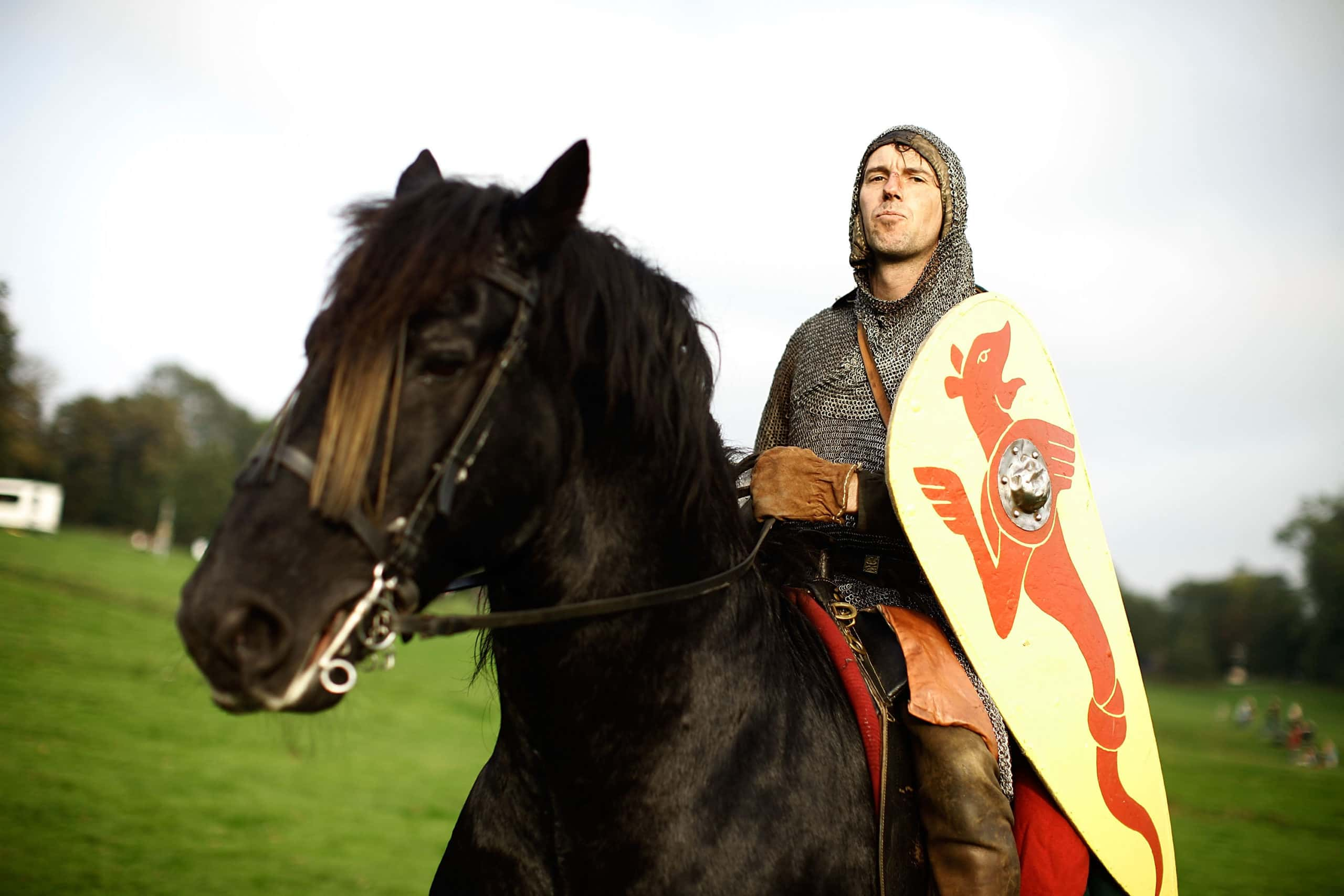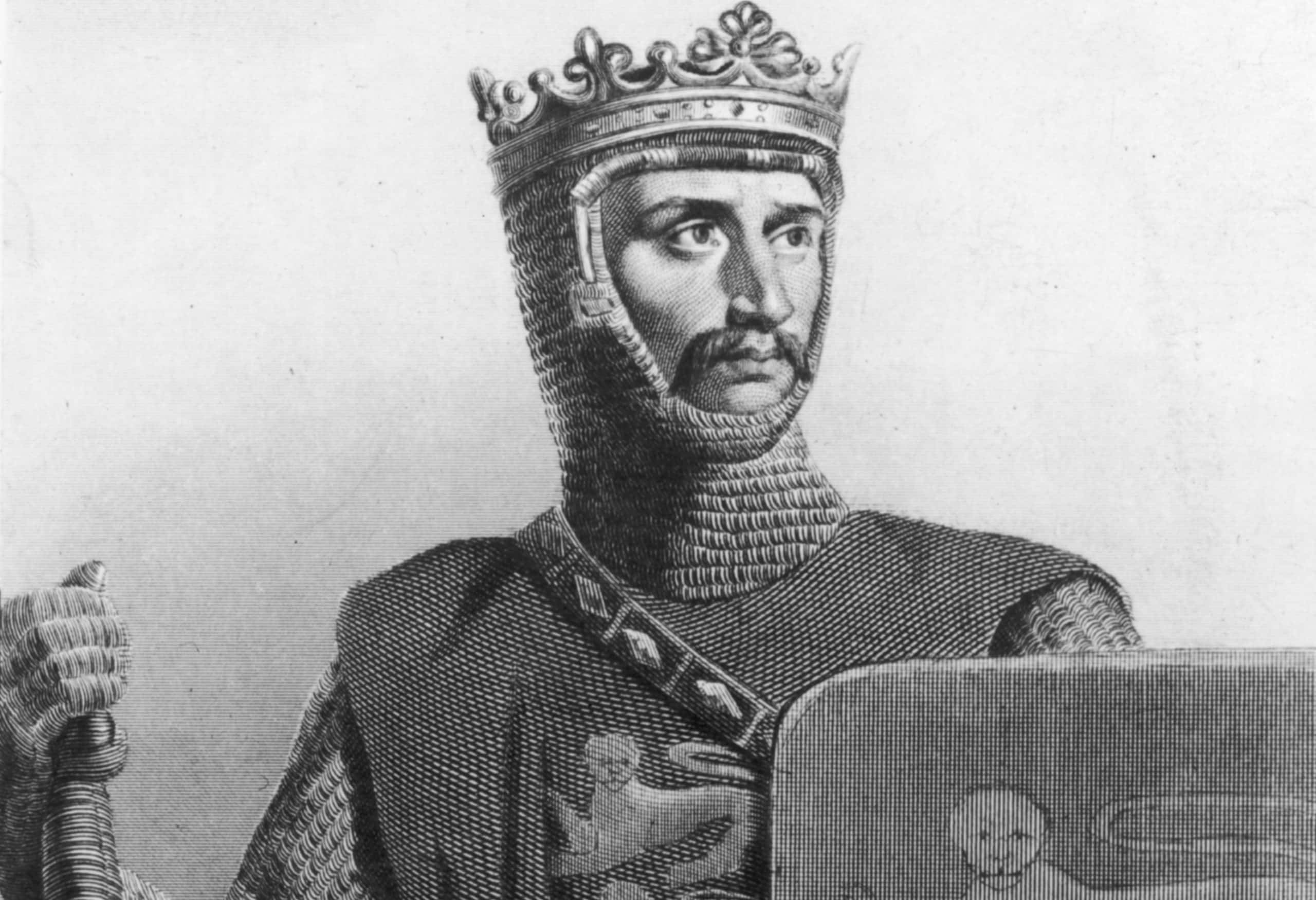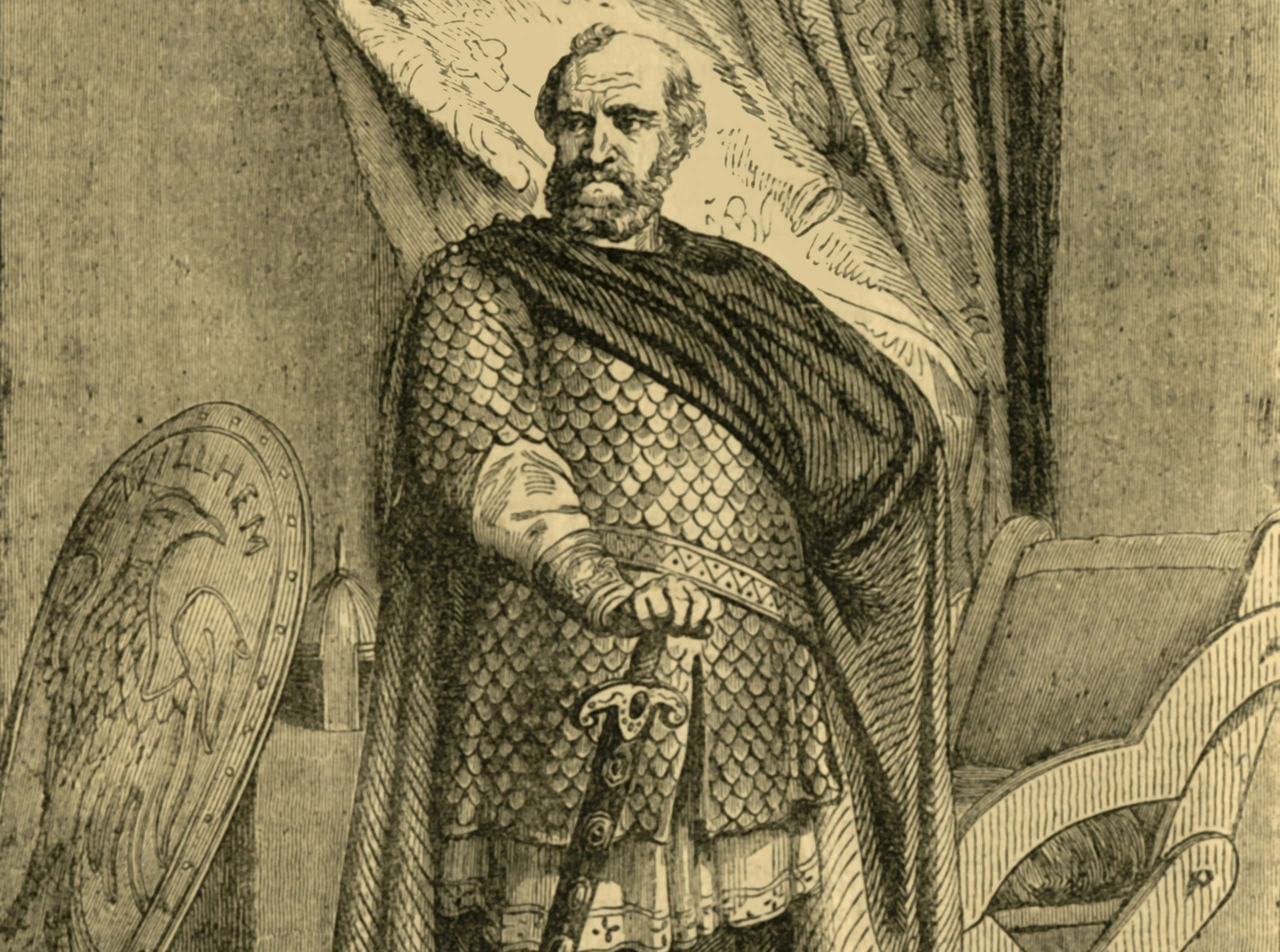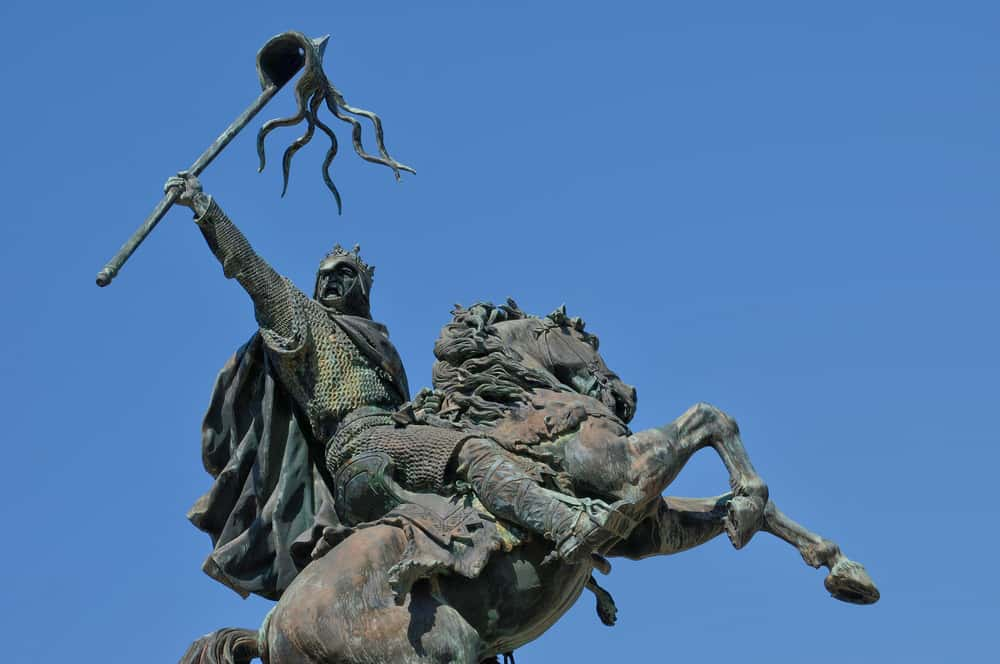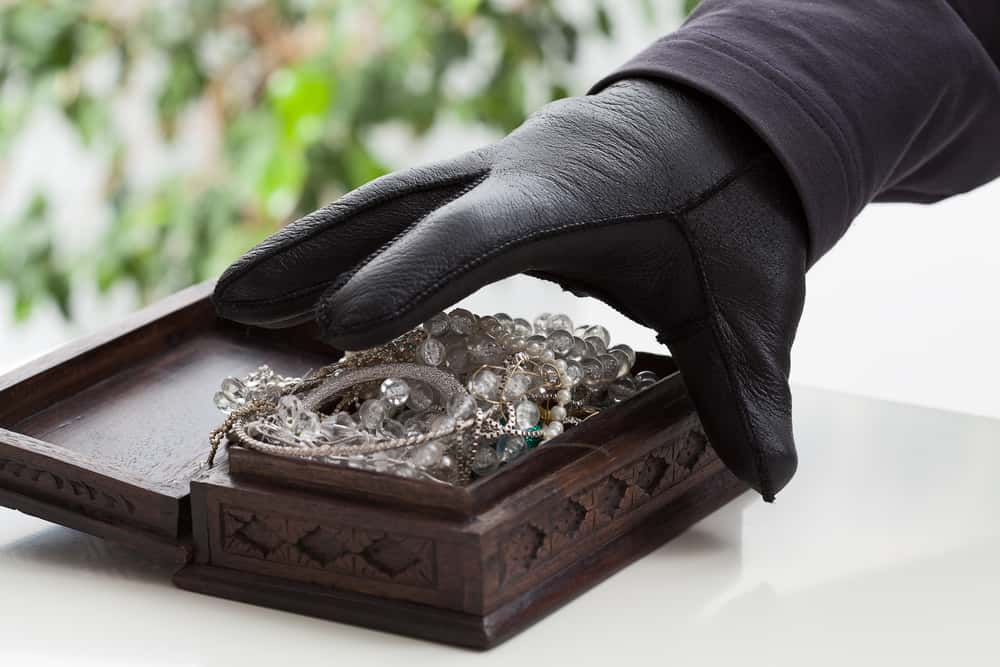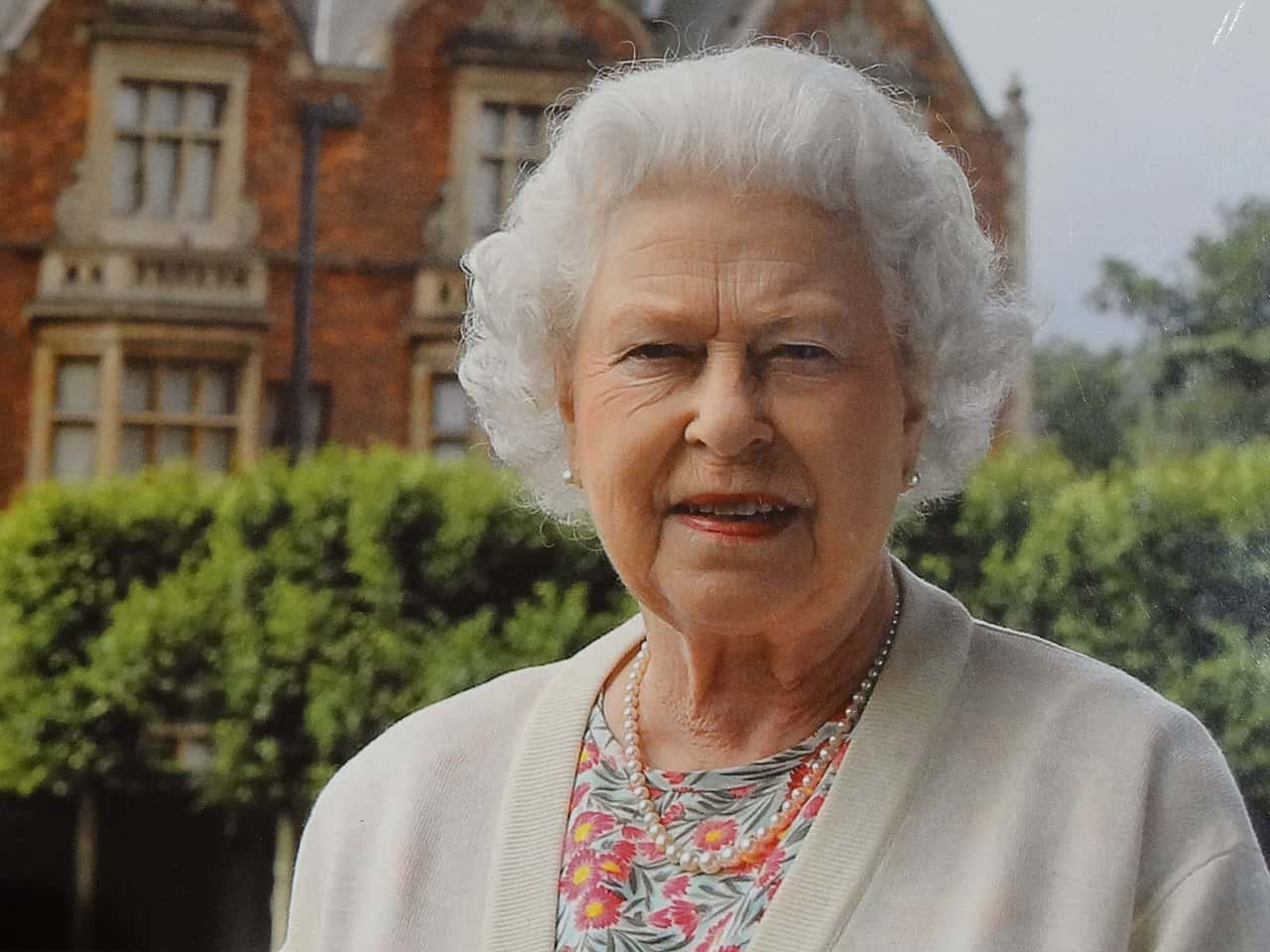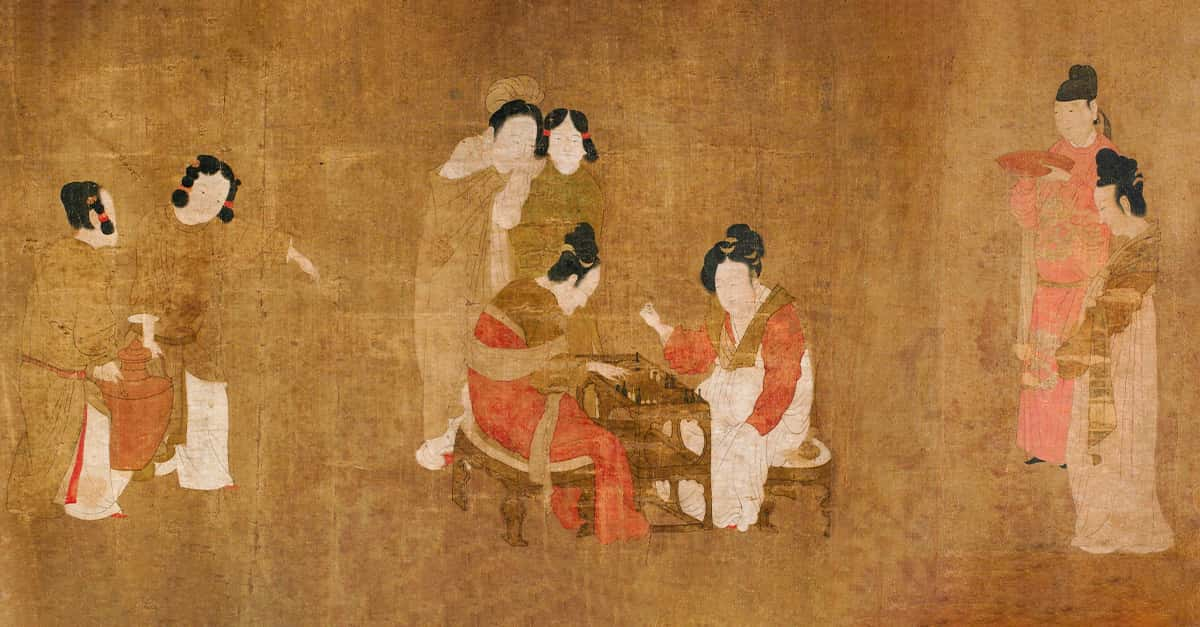William the Conqueror is one of the most infamous kings in the history of England, yet few people know this legendary figure's dark history. Why was his birth so scandalous? Why did he invade England in the first place? What horrible act caused one writer to say, "I have often praised William...but I can say nothing good about this brutal slaughter. God will punish him?" Let's find out.
1. He Was A Viking
Most of you know that William the Conqueror came from Normandy in Northern France, but most people don't realize that the Normans weren't actually French. They were Vikings. In the 8th century, they raided Northern France for years until the king finally gave them their own territory so they'd stop. While William may have spoken French, he had Viking in his blood.
Speaking of William's blood, there's also another thing we have to get out of the way: The scandalous truth about his birth.
2. He Was Illegitimate
Before we called him William the Conqueror, he had a much more ignoble nickname: William the Bastard. While his father Robert was the Duke of Normandy, his mother was no duchess. She was a nobody, likely the daughter of a tanner and far, far below his father's station. She and the Duke fell madly in love, and it seemed like their romance was something out of a fairy tale. But there were few fairy tales in Medieval Europe. Their love didn't have a happy ending.
3. His Mother Was A Stunner
William's mother Herleva must have been a legendary beauty. Though her low birth means there are very few records of her, she allegedly made the Duke fall in love with her at first sight. He saw her washing clothes by a river and he fell head over heels. He should have found a noble wife to secure political alliances, but Herleva made him throw that all away.
The couple gave birth to William, and for the rest of his life, people whispered to old B-word behind his back. But if he ever caught anyone speaking ill of his birth or his mother, his response was chilling.
 William the Conqueror (2015), Les Films Du Cartel
William the Conqueror (2015), Les Films Du Cartel
4. His Enemies Taunted Him
Years later, when William was a full-blown Duke on the warpath, he besieged the town of Alençon. To taunt him, the residents of the town hung animal hides on their walls—a mocking reference to William being the grandson of a tanner. That turned out to be a horrible mistake. They'd made it personal, and William would make them regret it.
5. His Reaction Was Chilling
William the Conqueror wasn't one for mercy at the best of times, and the people of Alençon had insulted his mother. They must have had a good laugh while they were hanging the animal hides from their walls. They weren't laughing when William stormed the castle, captured 32 defenders, and had their hands and feet cut off.
William's wrath was so brutal, the nearby town of Domfront immediately surrendered to him without a fight. Lesson learned: Don't poke the bear.
 William the Conqueror (2015), Les Films Du Cartel
William the Conqueror (2015), Les Films Du Cartel
6. His Parents Got Around
As if his lowborn mother didn't complicate things enough, William's family tree just kept getting more twisted. His parents' love, while seeming so pure at first, couldn't last. They split and his mom remarried, giving him two half-brothers. Then his dad took another mistress, adding a new half-sister to the mix. The Norman Court was getting messier by the minute.
What's the only thing that could make it messier? The mysterious death of William's uncle, the Duke.
 William the Conqueror (2015), Les Films Du Cartel
William the Conqueror (2015), Les Films Du Cartel
7. His Dad May Have Offed His Uncle
William's father Robert wasn't supposed to be the Duke of Normandy. He had an older brother, Richard, who claimed that title. But the thing is, William's father and uncle never saw eye to eye. Robert had openly rebelled against Richard, trying to claim the Duchy for himself. Richard defeated him, but not long after, he suddenly passed under mysterious circumstances. Though no one can prove that Robert eliminated his own brother, he definitely had the motive and the means to do it.
William the Conqueror eventually grew up to be ruthless, efficient, and cruel—sounds like the apple didn't fall too far from the tree.
 William the Conqueror (2015), Les Films Du Cartel
William the Conqueror (2015), Les Films Du Cartel
8. His Dad Did Something Dumb
If Robert had ever married and had a legitimate son, William would never have become the Duke of Normandy and the world would probably look completely different today. But he didn't, because he made an incredibly stupid decision. Robert decided to make a pilgrimage to Jerusalem. His supporters begged him not to go, because traveling across Europe in the 10th century was basically a doomed plan.
He ignored their pleas, went anyway—and never saw his homeland again. He succumbed to illness on the return trip from Jerusalem. That meant the seven-year-old William was duke now. It also meant that chaos erupted in Normandy.
9. Normandy Fell Apart
When he grew up, William the Conqueror was a man who took control of his own destiny, but that's hard to do when you're only seven. With a child as the head of the Duchy, the Norman nobles all began vying for power and territory. There was anarchy in the countryside while several men attempted to claim custody of the young William.
Thus began the most terrifying chapter in William's life.
 William the Conqueror (2015), Les Films Du Cartel
William the Conqueror (2015), Les Films Du Cartel

History's most fascinating stories and darkest secrets, delivered to your inbox daily.
10. His Guardians Met Grim Fates
Whoever controlled William, controlled Normandy—but anyone who tried was playing a dangerous game. No fewer than four of Willam's guardians met a grisly end while trying to claim Normandy for themselves. William was caught in the middle of all this bloodshed—one of his guardians was slain in William's own bedchamber while he slept! But it wasn't just William's guardians who were in danger.
Many nobles wanted William himself out of the picture so they could take the Duchy for themselves—and they got very close to succeeding.
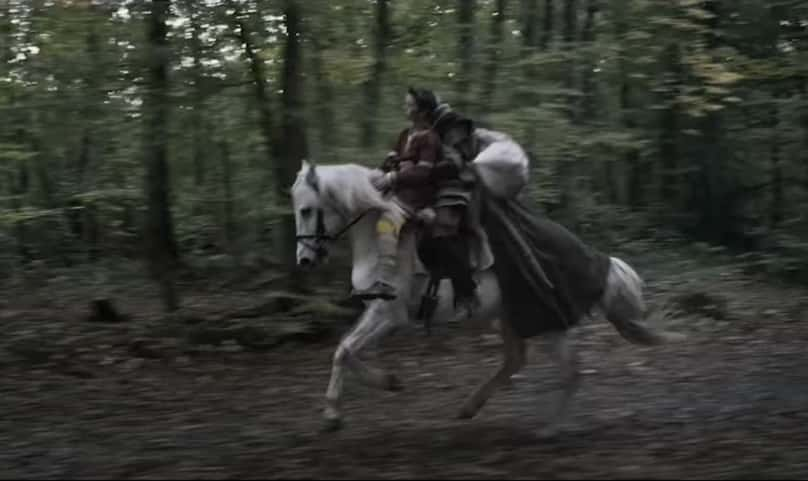 William the Conqueror (2015), Les Films Du Cartel
William the Conqueror (2015), Les Films Du Cartel
11. He Faced Killers As A Boy
William the Conqueror faced several attempts on his life before he was even a teenager. According to one story, his uncle had to hide the little duke in peasants' houses to thwart would-be assassins. According to another, the boy's own jester warned him of an impending attack and William fled alone into the night to escape. Though no one ever succeeded in ending his life, one rebel, Guy of Normandy, did manage to make William flee Normandy and name himself Duke.
But William wasn't a boy any longer. He was nearly 18, and he'd been fighting for his life since he seven. It was time he started fighting back.
12. He Took Back What Was His
William fled Normandy, but not for long. He returned just a year later, and this time, he had help. The King of France himself took William's side and traveled north with him to put down Guy of Normandy and the other rebels. William personally charged into the field of battle at Val-ès-Dunes near Caen to take back his birthright. According to some contemporary writers, his efforts swung the tide, and he emerged victorious.
William was a man now, and ready to defend his title with the sword if need be. Which is a good thing, too—because the slaughter was far from over.
 William the Conqueror (2015), Les Films Du Cartel
William the Conqueror (2015), Les Films Du Cartel
13. His Life Was Endless Fighting
William took back his Duchy by force, but that didn't stop people from coming for his head. While he remained the Duke, he spent the next decade in perpetual combat, putting down one rebel after another. If I were a Norman noble, I'd have given up at this point—William was undefeated in battle—but they just kept coming. This violent decade only helped forge William into the conqueror he'd become.
But winning battles isn't the only way to hold onto your throne. Marriage is another. William needed to find a wife to ensure political alliances—yet when he did meet future bride, he made the worst first impression possible
 William the Conqueror (2015), Les Films Du Cartel
William the Conqueror (2015), Les Films Du Cartel
14. He Met His Dream Girl
William had the backing of the King of France, but he needed more than that if he was going to hold onto Normandy. In 1049, he struck a deal with Count Baldwin V of Flanders to marry his daughter, Matilda. Flanders would be a powerful ally—but there was just one problem. Matilda had no interest in marrying an illegitimate son. Tough luck, right? Well, here's the thing with William the Conqueror: He didn't really take "No" for an answer.
15. He Made A Horrible First Impression
For William's parents, it was love at first sight. William's first meeting with Matilda of Flanders was...the exact opposite of that. When William asked for her hand in marriage, she completely blew him off. His response was brutal. Before she could ride off, he grabbed her by her braids and viciously ripped her from her horse.
Sorry William, I don't think the way to a girl's heart is through her braids...or is it?
16. They Made Up
Despite their disastrous first meeting, William and Matilda did end up marrying. And, against all odds, they appear to have had a remarkably tender, loving, and faithful relationship. William had more flaws than we can count, but infidelity was not one of them. He never took any mistresses, and he remained by Matilda's side for the rest of her life.
William married Matilda for political purposes, but it didn't take him long to realize that he'd found someone every bit as ruthless and capable as he.
17. His Wife Was A Boss
Most women in 11th century Europe wielded no power in society. Matilda of Flanders was not most women. While William was out conquering, he always left Normandy in Matilda's hands. There were still countless nobles vying for a chance to claim the Duchy for themselves, but Matilda outmaneuvered them all and handily kept Normandy within William's grasp.
Hair-pulling aside, theirs truly was a match made in heaven. All the more surprising, then, that it almost never happened.
 William the Conqueror (2015), Les Films Du Cartel
William the Conqueror (2015), Les Films Du Cartel
18. The Pope Was Against Him
There were plenty of people who thought William's illegitimate birth made him unfit to rule Normandy—and the Pope was one of them. All Christian royals needed papal approval to marry, and Pope Leo IX refused to bless William and Matilda's marriage. Most men would have tucked their tails between their legs and gone home, but I bet you can guess what William the Conqueror did.
He threw his middle finger up at the Pope and married Matilda anyway. You think some nobody like the Pope was going to stop William from getting what he wanted?
19. He Was A Unit
William the Conqueror cut a figure to match his name. While only about 5'10, he was a burly man with a guttural, commanding voice. Though in his later years he ballooned to spherical proportions, he spent most of his life in remarkable shape—something he proved time and time again on the battlefield. This was no soft ruler who led from the comfort of his throne. William was allegedly unequaled as a fighter and as a horseman, and he'd prove it to anyone who challenged him.
But there's still one big question we haven't answered: England hasn't come up once yet. When did William finally, you know, conquer something?
20. He Was An Unlikely Choice
William probably didn't think too much about England until 1051, when the childless King Edward the Confessor made a truly bizarre decision: He chose William to be his heir. William was far from the obvious choice. He was Edward's...uncle's...grandson. Not exactly the closest connection. But that wasn't the only issue with Edward's choice.
If William ever intended to actually claim England's throne, he was going to have some serious opposition.
21. Not Everyone Was Happy About It
It seems pretty weird that Edward would choose some random distant relation from Normandy to become his heir, and plenty of people were upset about it—most of all Edward's father-in-law Godwin, the Earl of Wessex. Godwin was one of the richest men in the country, and he married his daughter to Edward so his grandson could become king.
So not only does Edward not give Godwin a grandson, but now he's going to give the throne away to some foreigner? Godwin wasn't going to take that lying down. This wasn't going to end well...
22. He Finally Secured His Rule
Nothing could happen until Edward the Confessor croaked, so William spent the next few years locking down Normandy. After decades of chaos, he finally secured his borders, grasping his Duchy in an iron fist. With Normandy under control at last, he could look outward and start to think about some conquering. And, wouldn't you know it, guess who finally kicked the bucket in 1066?
 William the Conqueror (2015), Les Films Du Cartel
William the Conqueror (2015), Les Films Du Cartel
23. The King Betrayed Him
Edward the Confessor passed in January 1066. He'd made a fine mess of things by naming William as his heir all those years ago. What he did on his deathbed made things even worse: He reneged on his deal with William and named Godwin's son Harold as his successor. Obviously, the English nobles were happy that one of their own remained on the throne, but you know who wasn't happy? William.
Edward had all but promised William the throne of England. Do you think he was just going to shrug and let bygones be bygones? He was getting that crown, one way or another.
24. Everyone Wanted The Throne
England was in a full-blown crisis of succession. Harold became king, but not everyone accepted that right away. On top of William, Harold's brother Tostig wanted the throne for himself. So did the King of Norway, Harald Hardrada. No amount of diplomacy was going to solve this—whoever claimed England's crown would do so by force. And, in case you hadn't been paying attention, William the Conqueror was pretty good at the whole "by force" thing.
25. He Took His Time
William the Conqueror may have been power-hungry, but he was also a patient man. He'd waited many years for Edward the Confessor's demise; he could hold out a little longer. He gathered his forces to invade...and waited. Harold deployed his men all along the English Channel to await an invasion, but it never came. The months went by, and William stayed put.
He was waiting for Harold to blink—and it was only a matter of time.
26. He Got His Chance
The year 1066 in England felt like a Game of Thrones book. Several factions maneuvered against each other for the throne, each of them playing an incredibly dangerous game. Two of them, Tostig and King Harald of Norway, decided to team up and strike first. They invaded Northern England and forced Harold's hand. He had to abandon his blockade on the English Channel and send his men north to deal with the threat.
King Harold handily defeated his brother and the Norwegian king, slaying them both at the Battle of Stamford Bridge. But he couldn't celebrate for long—this was exactly the chance William was waiting for.
27. He Left His Wife In Charge
William's patience paid off. Once King Harold's men abandoned the English Channel, he set sail to conquer. He entrusted Normandy to his wife for the duration of the invasion, and his confidence in her paid off. Matilda kept the usually treacherous Norman nobles handily in line while William set about changing the course of history forever.
28. The Conqueror Has Landed
With the coast clear, William the Conqueror landed in England at Pevensey Bay on September 28, 1066. He quickly moved to Hastings (ever heard of it?) where he built a castle and set up his base of operations for invading England. But he didn't just sit there and wait. William couldn't just trust that Harold would show up to face him in battle—he had to do something that would really get the king's attention.
29. He Sowed Chaos
To make sure he Harold came to him—and to make sure the local populace couldn't rise up to resist him—William set his men loose on the English countryside. They ravaged from village to village, farm to farm, baiting Harold to come face them in battle. Well, the plan worked. After Harold dealt with the invaders in the North, he got the news that William had landed back down south.
He gathered his men and headed straight for the Normans like a moth to a flame.
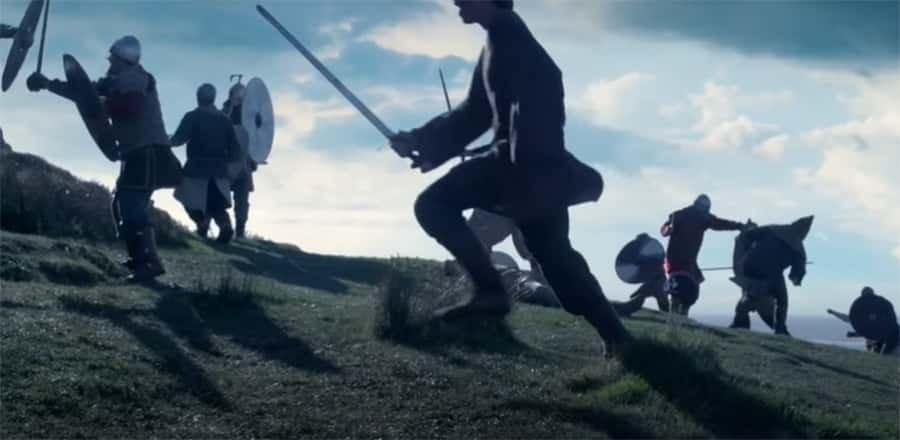 William the Conqueror (2015), Les Films Du Cartel
William the Conqueror (2015), Les Films Du Cartel
30. King Harold Pushed Hard
King Harold pushed his men hard to face William. They marched an average of 43 kilometers per day for nearly a week straight to bridge the gap and meet William at Hastings. Imagine covering the distance of a marathon, every day, while sleeping on the cold ground, and carrying all of your equipment with you. Sounds miserable, right? Well, guess what, it would get a whole lot more miserable once they finally got there.
31. He Led From The Front
The day we've all been waiting for has arrived. The Battle of Hastings. Few people realize just how awful that day really was. Most medieval battles lasted only a few hours. Harold and William's men started fighting at nine in the morning and the slaughter lasted for the entire day. Of course, William was there to lead his men personally, but he wasn't the first to enter the fray.
The first person to strike in the Battle of Hastings was the last person anyone expected.
32. The Jester Struck First
Before the fighting had actually started, the two sides faced off, tensely staring at one another. That's when William's jester, Taillefer, ran out in front of the Normans and began taunting the English. According to legend, he sang songs, threw insults, and juggled his sword, much to the fury of the anxious Englishmen. One English fighter allegedly ran out to try and stop Taillefer, but the jester was no kitten.
Taillefer slew the man, then charged the English alone, taking four more men with him before he was cut down, singing the whole time. The battle had begun.
33. Things Did Not Go According To Plan
Aside from Taillefer's inspiring yet suicidal opening act, the Battle of Hastings went terrible for William at first. The English formed an impenetrable shield wall atop a ridge and threw the Normans back time and time again, inflicting heavy casualties. Some of William's Breton troops completely lost their nerve and fled the field in a total panic.
Then, a terrifying rumor started spreading through the Norman forces like wildfire.
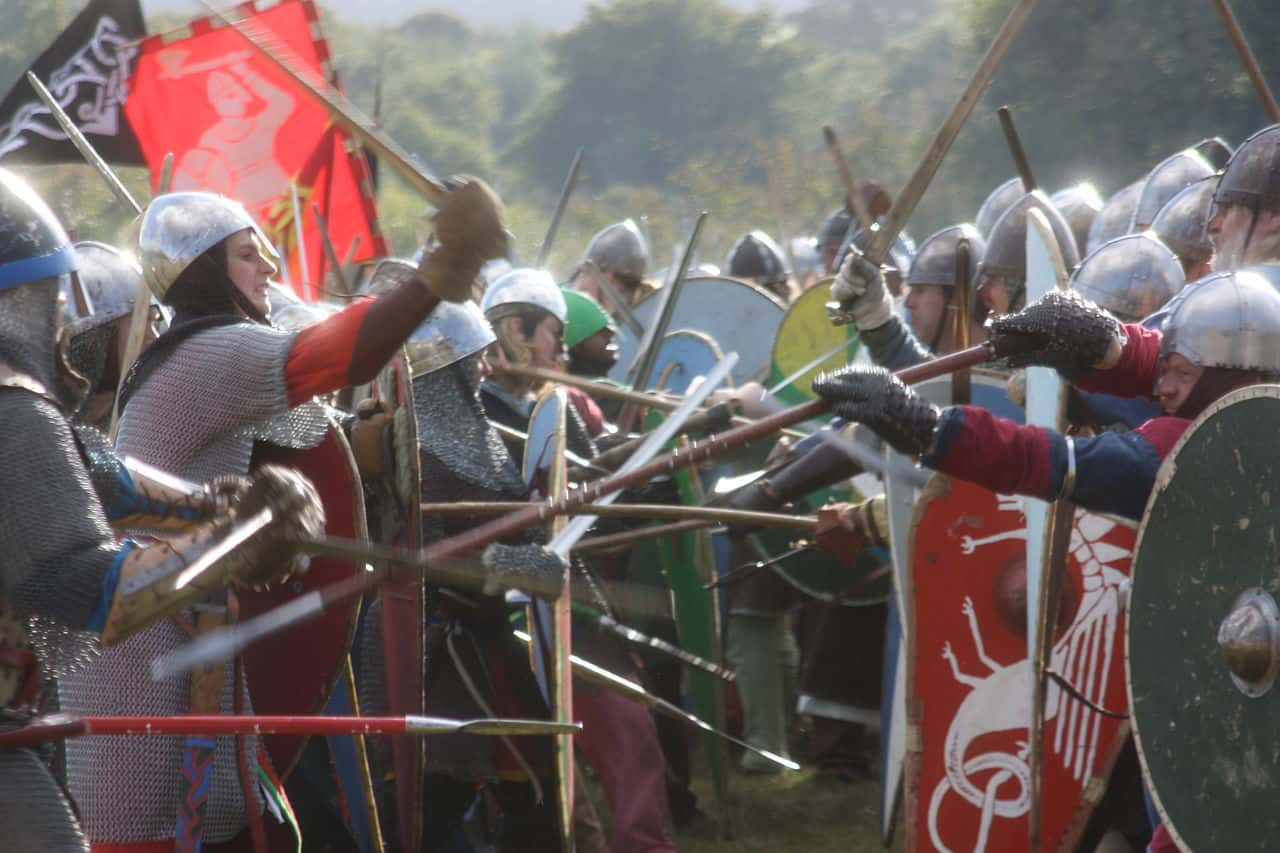 Wikimedia Commons, Antonio Borrillo
Wikimedia Commons, Antonio Borrillo
34. He Turned The Tide
Somehow, word got out that the English had managed to slay William himself. His men balked, and they were on the brink of total collapse when William ripped off his helmet and rode to the front lines to prove to his men he was still kicking. Seeing their commander alive after fearing him dead reinvigorated the Normans, and they began to turn the tide. But it would still take a decisive blow to end the slaughter.
35. He Went For The Head
The exact details about that day are fuzzy—it was nearly a thousand years ago, after all—but we know for sure how the battle ended: King Harold himself was slain, likely by an arrow straight through the eye. With their leader gone, the English forces slowly crumbled. Finally, after what felt like an eternity, the fighting stopped. William was victorious. But have you ever heard of a sore winner? Yeah, that was William the Conqueror to a tee.
36. He Left His Foes To Rot
Many medieval warriors would show respect to their enemies after a battle had finished. Not William the Conqueror. He ordered his men to leave the corpses of the English where they lay on the battlefield to rot. King Harold's mother even offered him her son's weight in gold for his remains, but he refused. To William, sending a message was more important than gold, and he had plans for the pretender king's body.
37. He Disrespected His Enemy
Rather than give Harold a burial befitting a fallen king and a respected adversary, William ordered his men to throw his body in the ocean. The way William saw it, the throne had been his all along. Why show Harold any more respect than any other traitor? But just because Harold was swimming with the fishes doesn't mean William was done by any means. He still had a long, bloody road ahead of him.
38. He Barely Made It Out Alive
The world would probably look really different today if William had lost at Hastings—and he came really close to losing. According to some sources, three different horses were shot out from underneath William that day, but he managed to escape unscathed and keep fighting every single time.
39. The Name Is Wrong
One last thing to know about the Battle of Hastings: It didn't actually take place at Hastings. Rather, it occurred several miles away at a town now, quite fittingly, called Battle. That's right: The Battle of Hastings was actually the Battle of Battle. But in case that's not quite enough battle for you, don't worry. William the Conqueror was just getting warmed up.
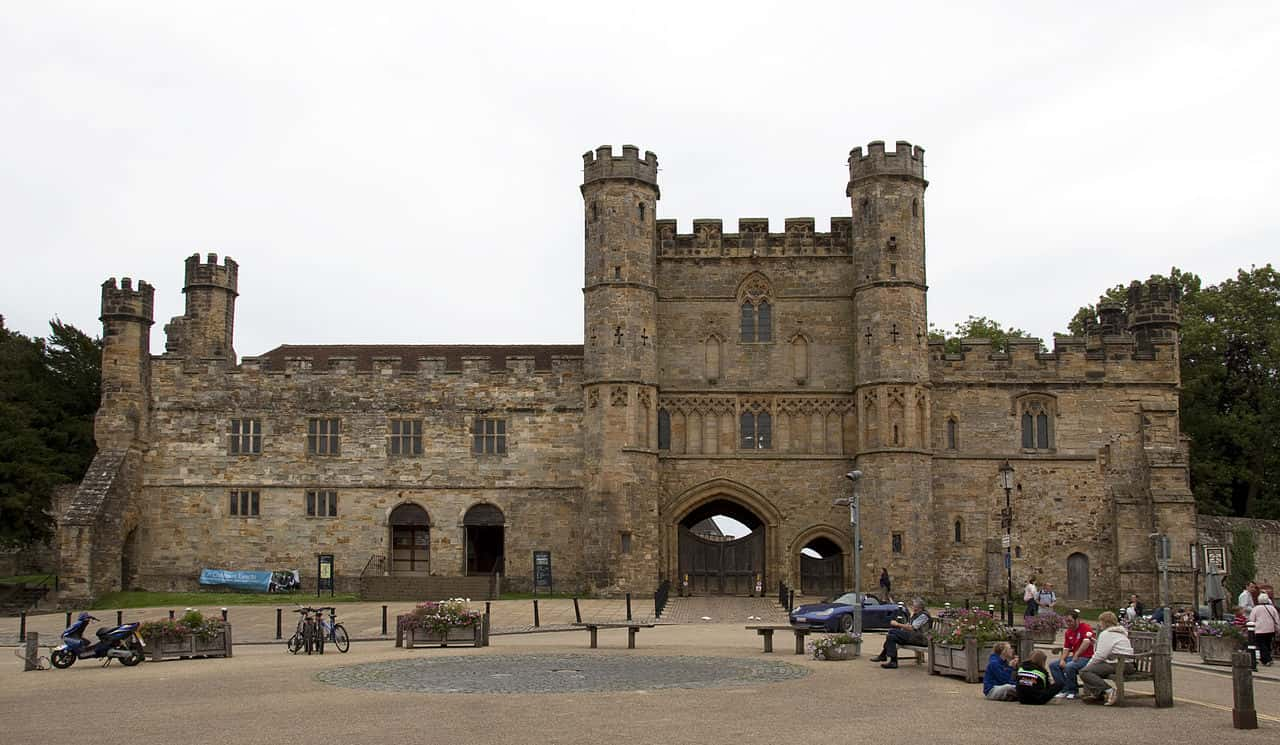 Wikimedia Commons, Tony Hisgett
Wikimedia Commons, Tony Hisgett
40. The English Didn't Submit
William had defeated Harold, but that didn't make the English like the idea of a Norman king any more than they had before. They nominated Edgar the Ætheling, the last remaining heir to the House of Wessex, as their king. They should have learned their lesson after Hastings. With William the Conqueror, it was pretty much always better to cut your losses than to try and take him on.
41. He Pillaged Straight To London
When some rulers take over a country, they try and win the people to their side with gifts and mercy. William the Conqueror was not one of those rulers. After Hastings, he pointed his army towards London and laid a path of destruction the entire way there. He burned and pillaged across the countryside until he finally arrived at jolly old London Town.
That's when the English nobles finally called uncle. Smart move.
42. He Showed Mercy For Once
After months of pillaging, when William crossed the Thames in early December, the English waved the white flag at last. Edgar the Ætheling and several other powerful nobles submitted and swore fealty to him. And, for once in his life, William actually showed some mercy. He allowed many of the English nobles to retain their lands and their titles—for now at least. But for those who had fought against him? They weren't so lucky.
43. He Erased Those Who Resisted
William stripped the lands from every member of Harold's family and did the same to some other men who took up arms at Hastings. One day, they were powerful kings, lords, and earls—now they were nothing. He was finally crowned King of England on Christmas Day, 1066. But, befitting a man like William, there was an utter catastrophe on the day of his coronation.
44. His Coronation Went Horribly Wrong
William and the rest of the Normans were the victors, but they were still a little on edge. They got the lords to submit, but they were still in strange territory surrounded by a foreign people. And what happens when people get nervous? They do stupid things. During William's coronation, the Londoners took up a cheer for their new king.
For William, it must have been a great moment...at first. Soon after the cheers began though, the situation turned into a nightmare.
45. His Guards Started A Riot
If you're surprised that the Londoners would cheer for their conqueror, you're not the only one. William's guards mistook the roar for a riot against the new king. So what did they do? They started setting buildings on fire! One moment, William was getting crowned in front of a cheering crowd. The next, he looked out over utter chaos; burning buildings and a stampede of panicked onlookers running for their lives.
The moment was ruined, but the important part was the William was king. Now, he had to make sure it stayed that way.
46. He Built Hundreds Of Castles
William the Conqueror completely reshaped the face of England. In order to maintain his grip on this new country, he embarked on a massive campaign of castle building. He ordered the construction of hundreds of keeps, many of which still stand to this day. Among the most famous of them is the White Tower, the central and most famous building of the Tower of London.
But castles weren't the only major change William instituted in England. He's actually responsible for one of the most bizarre facts about the English monarchy.
47. He Made England...French
William the Conqueror. Richard the Lionheart. Edward Longshanks. These are some of the most famous kings in the history of England. And what's another thing they had in common? None of them spoke English! Remember, William the Conqueror was from France. Though he kept some English nobles around at first, by the end of his reign, he'd replaced nearly the entire English aristocracy with Frenchmen.
No "English" king would speak English as his first language until Henry IV, over three centuries later.
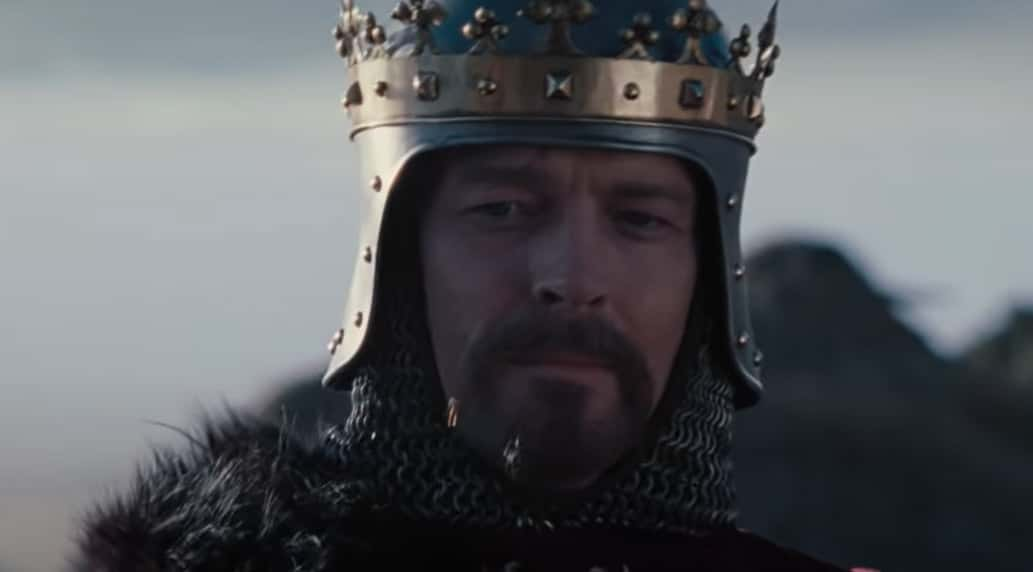 Kingdom of Heaven (2005), Twentieth Century Fox
Kingdom of Heaven (2005), Twentieth Century Fox
48. He Tried His Best
To William's credit, he did try to learn how to speak English. Unfortunately, tongues were not one of his gifts and he never got even close to mastering it. The fact that he was also completely illiterate definitely didn't help, either. With a king who only spoke French, the language became more and more dominant in the country. Thanks to William, nearly half of the words in modern English have a French origin.
49. He Did ONE Good Thing
Don't say William never did anything for anybody: While he could be ruthless, cruel, and unbelievably brutal (the worst atrocity of his rule is still to come), there's one thing he did that was undeniably good: He helped put an end to slavery in England. Before he showed up, as many as one in five people in England were slaves. Meanwhile, slavery was essentially unheard of in Normandy, and William put severe restrictions on the buying and selling of slaves.
Within a few decades of Norman rule, slavery was all but extinct in England. So good on you William! Does that erase all the horrible stuff he did? You decide.
50. He Replaced Hanging With Something Worse
William also abolished capital punishment in England. I was going to say that's another good thing he did, but then I remembered what he replaced it with: Instead of hanging, he decreed that criminals should be blinded and castrated. I think I'd take the hanging.
51. He Left England
After a few more months settling things in England, Williams decided everything was in order—so he left. Remember, he was the Duke of Normandy first. Being the King of England was more like a side gig. He headed back across the English Channel to see his beloved Matilda and check in on how things were back at home, leaving his half-brother Odo in charge.
What could possibly go wrong?
52. Rebellion Began Immediately
Revolts popped up pretty much the second William left. From European rivals who wanted a slice of William's pie to English rebels who had supported Harold, England was a powder keg of rebellion, revolt, and resistance. Odo tried his best, but he was no William the Conqueror. Our Duke managed to enjoy just a few months in his homeland before he had to come back and sort out England once again.
53. His Fight Never Finished
Holding onto England was like playing a country-wide game of whack-a-mole. Whenever William thought he'd put down one revolt, two more seemed to spring up elsewhere. Upon his return, he chased the latest rebels—rallying around old King Harold's mom—back to Exeter. There, he put them through a brutal siege before finally forcing them to submit.
William washed his hands, built a quick castle, and called it a day—but a conqueror's work is never done. Harold's mother was dealt with for now, but his sons were another problem. As I said, whack-a-mole.
54. He Finally Got To Go Home Again
William dealt with Harold's sons, and now he could finally take a breather, right? Nope! Two of the most powerful Earls in England had changed their mind about him, and now they revolted. Didn't any of these people learn? William charged their lands, forced them into submission, and built a few more castles for good measure.
After all that, William finally felt like England was secure once more. He set sail back for Normandy for some much-needed R and R. How long do you think it was before he needed to head right back?
55. He Faced His Biggest Setback Yet
Mere months after William left England, yet another revolt sprang up—but this one was different. Remember Edgar the Ætheling, who'd been proclaimed king before William forced him to swear fealty? Apparently, he liked the sound of "King Edgar," because he teamed up with the King of Denmark at attacked York, one of the most important cities in the North.
Before now, none of the rebels had ever accomplished much, but Edgar managed something none of them ever had.
56. There Was A New King In Town
Despite William's new castle at York, Edgar succeeded. It helped that Robert de Comines, the Norman governor William had left in charge of Northumbria, was an idiot. Despite a local bishop warning him about a rebel force, Comines rode blindly into the city of Durham, where Edgar's men surrounded him and slew him and his entourage.
Next, Edgar stormed York, slaughtered the Norman defenders inside, and captured the city. It was the biggest blow William had faced in England, but that wasn't the worst part: The local nobles declared Edgar the true King of England. Now this was getting serious.
57. His Reaction Was Horrific
William had to return to England once more to deal with the threat, but he was done with whack-a-mole. His response to Edgar's treachery would be the darkest stain on his entire legacy. Historians call it "The Harrying of the North." I'd say that doesn't nearly do justice to how horrific it was.
58. The Rebels Fled
First things first. William rushed north to York, where his reputation preceded him. Edgar and his men ran for their lives. Edgar fled to Scotland and the other rebels went to ground, hiding out all across the North. All William wanted was to meet them in battle to finish this once and for all. Since they wouldn't let him do that, he did something so much worse.
59. He Burned The Forest To The Ground
William broke his forces up into small groups and let them loose across the North like a pack of wild dogs. Their mission? Burn, loot, and terrify. If the rebels wouldn't meet William in battle, he'd ravage the North so brutally that they'd be forced either to submit or to face him once and for all. The Normans had deployed such tactics before, but the Harrying of the North different. This time, they went too far.
60. The North Became A Nightmare
On top of burning villages and slaughtering innocents, William's men destroyed food stores and livestock all across the North. Anyone who lost their lives in the initial massacre was actually lucky: Those who remained succumbed to slow, painful starvation over the winter. Many Northerners resorted to cannibalism just to survive.
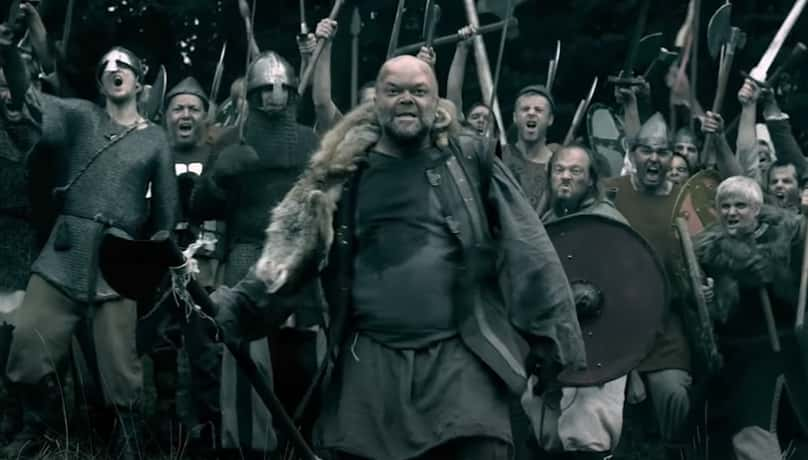 William the Conqueror (2015), Les Films Du Cartel
William the Conqueror (2015), Les Films Du Cartel
61. No One Could Defend What He Did
Even people who supported William realized that the Harrying of the North was an atrocity. A Norman writer once wrote: "Nowhere else had [William] shown such cruelty. This made a real change. To his shame, William made no effort to control his fury, punishing the innocent with the guilty...I have often praised William in this book, but I can say nothing good about this brutal slaughter. God will punish him."
62. He Committed A True Atrocity
When all was said and done, up to 100,000 people succumbed to starvation alone, not even including those who lost their lives in the Norman raids. William had employed brutal methods before and he'd do so again, but the Harrying of the North was the worst thing he ever did. At least it worked.
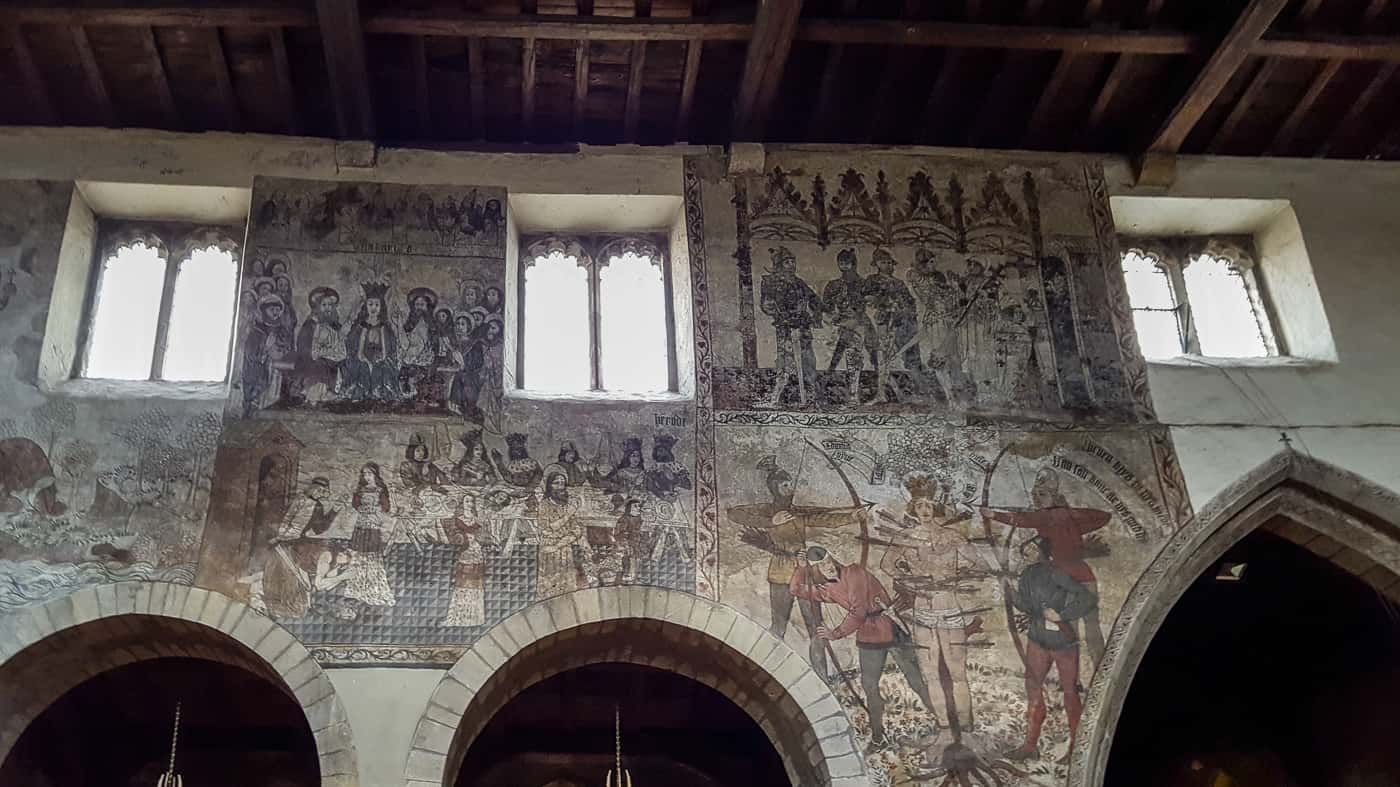
63. "King" Edgar Gave Up
Any chance Edgar the Ætheling had at claiming England's throne ended after the Harrying of the North. He fled to Scotland, then Flanders, hoping he might still mount a resistance, but after the North had seen what William was capable of, there just weren't enough people to support him. Edgar finally submitted to William in 1074, and with that, William's rule was secure. Just kidding, it was NEVER secure.
64. His Earls Crossed Him
William returned to Normandy for an entire year, under the assumption his kingdom was firmly within his grasp. But William's rule was based more on fear than loyalty, and there was always someone who wanted his head. In 1075, two of his own earls revolted in an attempt to overthrow him and claim his kingdom for their own. Yeah yeah, we've heard this before. Someone revolts and William crushes them.
Except the Earls had something none of the other rebels did...
65. He Finally Lost
While his father had supported William, the new King of France thought the conqueror might be getting a little too big for his britches. When William cornered one of the treacherous earls in a castle in Brittany, King Philip showed up with an army of his own. They met the Normans in battle, and for the first time in William's entire life...he lost. Well, it had to happen sometime.
He fled to Normandy and decided to play it safe for once. He made peace with Philip, beheaded one of the treacherous Earls, and threw another behind bars. Good thing too, because William was about to suffer yet another betrayal—and this one was a lot closer to home.
66. His Son Turned On Him
William didn't spend all of his time conquering. He was a family man too! He and Matilda had at least nine kids, but they weren't exactly the Brady Bunch. Believe it or not, William wasn't the most supportive father, and his eldest son Robert felt like daddy wasn't giving him the respect he deserved. In 1077, Robert and William's little father-son disagreements went to a whole new level.
William had fought kings and earls before, but what was it going to be like to fight his own son?
67. His Son Had Powerful Allies
William and his aging supporters were the "OK Boomers" of 11th-century Normandy. Robert and other young men his age felt like it was high time the older generation started passing the torch, but it wasn't happening. So, Robert brought a bunch of those young lords together, along with hundreds of fighting men, and started raiding Normandy.
Now, William's own son was against him. That must have hurt—but not as much as what came next.
68. His Son Nearly Killed Him
William did what he did best and cornered his son and the other rebels in a castle—but Robert was a chip off the old block. When William least expected it, Robert and his men charged out of the castle to take the besiegers by surprise. Robert himself managed to throw William from his horse. For a second, it looked like the Conqueror's number was finally up.
At the last instant, an Englishman gave his own life to save William, and he managed to live to fight another day. You'd think that would make things between father and son pretty awkward, right? Well, the exact opposite happened.
69. Robert Made Him Proud
Apparently, defeating his father in battle was the only way Robert could earn his respect. William broke the siege and returned home. Not long after, he buried the hatchet with his son. He officially confirmed that Robert would receive Normandy when he was gone, and Robert gave up his rebellion. I'm not sure if that's how I'd want to resolve my family disputes, but hey, whatever works for you.
So William and Robert had finally made nice—but there was another unforeseen consequence to the rebellion.
70. His Enemies Smelled Blood In The Water
Robert earned William's respect by defeating him, but William's enemies saw it as an opportunity. Maybe the Conqueror was finally growing old and vulnerable. Back in England, the King of the Scots launched a devastating raid on the North of England (as if they hadn't already been through enough). For over a month the Scots ravaged the land, forcing William to return to England for the first time in years to set things straight.
But this time, he had a new, powerful ally.
71. He Sent His Son To Fight For Him
William returned to England in 1080, and he brought his son Robert along with him. Robert had proven himself in battle, so William entrusted him with the fight against the Scots in the North. I guess Robert had learned a thing or two from his old man, because he quickly brought the Scots to heel. Things were looking pretty good for William the Conqueror at this point.
He was on good terms with his son, his kingdom felt secure—yup, it was a good time to be William. Of course, that's when everything started falling apart.
72. He Lost The Person He Loved Most
The first blow was the most painful. After decades together, William's beloved wife Matilda passed. For such a brutal man, his marriage had always been close and tender, and her loss hit William hard. He didn't have long to mourn her, though—yet another betrayal was in the works.
73. His Son Betrayed Him Yet Again
William the Conqueror was a man who instilled fear in anyone who knew him—but by 1083, he wasn't the man he once was. Everyone could see it, especially his son Robert. Robert saw that his dad grew vulnerable, so he decided to shoot his shot. He made a deal with the King of France and launched yet another rebellion against his dad.
William just didn't command the same respect he once had—and, to be fair, there was a good reason for that.
74. The Years Had Changed Him
In his youth, William the Conqueror had been a formidable physical specimen. As an old man? Not so much. William's weight had ballooned to ridiculous proportions. The rotund conqueror simply couldn't intimidate people like he used to. The King of France himself even offered a devastating insult: He likened the aging William to a pregnant woman about to give birth.
William hated the weight he'd gained and tried desperately to lose it. Unfortunately, his methods weren't only ineffective—they were outright dangerous.
 William the Conqueror (2015), Les Films Du Cartel
William the Conqueror (2015), Les Films Du Cartel
75. He Tried A Disgusting Diet
Some historical reports claim that William tried his own version of a cleanse to try and lose the weight. He eschewed all solid food and drank nothing but wine and spirits for a time, hoping it would help him slim down. I'm not a doctor, but that doesn't sound like a good idea to me. And of course, it wasn't. William didn't lose any weight, and I can only imagine the damage it did to his body.
76. He Met A Painful End
William's wife was gone, his son was rebelling against him, and he weighed so much he could barely mount his horse. Most men would have thrown in the towel, but William the Conqueror wasn't going down without a fight. He continued to lead his men into battle until the very end. In 1087, when fighting against his son's French allies, William's mount reared up in battle. The bucking horse threw the corpulent king against the pommel of his saddle so hard it ruptured his intestines.
He held on for weeks, but there was nothing that could save him now. William the Conqueror succumbed to his injuries on September 9, 1087.
77. Everything Fell Apart
Even when he was old and fat, William the Conqueror still held his kingdom together mainly through fear and force of will. With him gone, things descended into chaos. Quite literally the moment he croaked, all of his richest earls jumped on their horses and rode off as fast as they could to protect their lands. Next, the vultures set upon William's deathbed. Servants, guards, and attendants grabbed everything they could carry from William's rooms: Arms, clothes, linen, furniture, anything that looked like it was worth something.
One report claims they left William's remains lying nearly on the floor, stripped of everything of value. But that wasn't even the worst indignity William suffered at the end.
78. His Funeral Was Absolutely Gruesome
William the Conqueror's funeral saw one of the disgusting moments in history. William's body was so large, it couldn't actually fit into the stone tomb his attendants had built for him. The priests tried their best to simply force it in—and that was a terrible mistake. They pushed on William's abdomen so hard that it burst, spewing putrid liquid everywhere. The resulting odor was so bad that mourners fled the church in horror.
What a way to go.
 Wikimedia Commons, Supercarwaar
Wikimedia Commons, Supercarwaar
79. His Blood Remains
William the Conqueror, the Viking-descended, Norman lovechild who took England, reshaped the country forever. Though the English crown has jumped all over the place in the millennium since, every single English monarch, right up to Queen Elizabeth II, can trace their ancestry back to William in some way. What's more, according to some genealogists, more than one in four English people today are distantly related to him.
80. He Was A Norman First And Foremost
One last thing to know about William the Conqueror: He's one of the most famous kings in English history, but he really didn't see himself that way. He was the Duke of Normandy first and foremost, and England was always second banana to him. He spent barely five years living in England, and he almost never left Normandy for the last 15 years of his life.
William might be the most important figure in the entire history of England, but it never really even meant that much to him.
Sources: 1, 2, 3, 4, 5, 6, 7, 8, 9, 10, 11, 12, 13, 14, 15, 16

